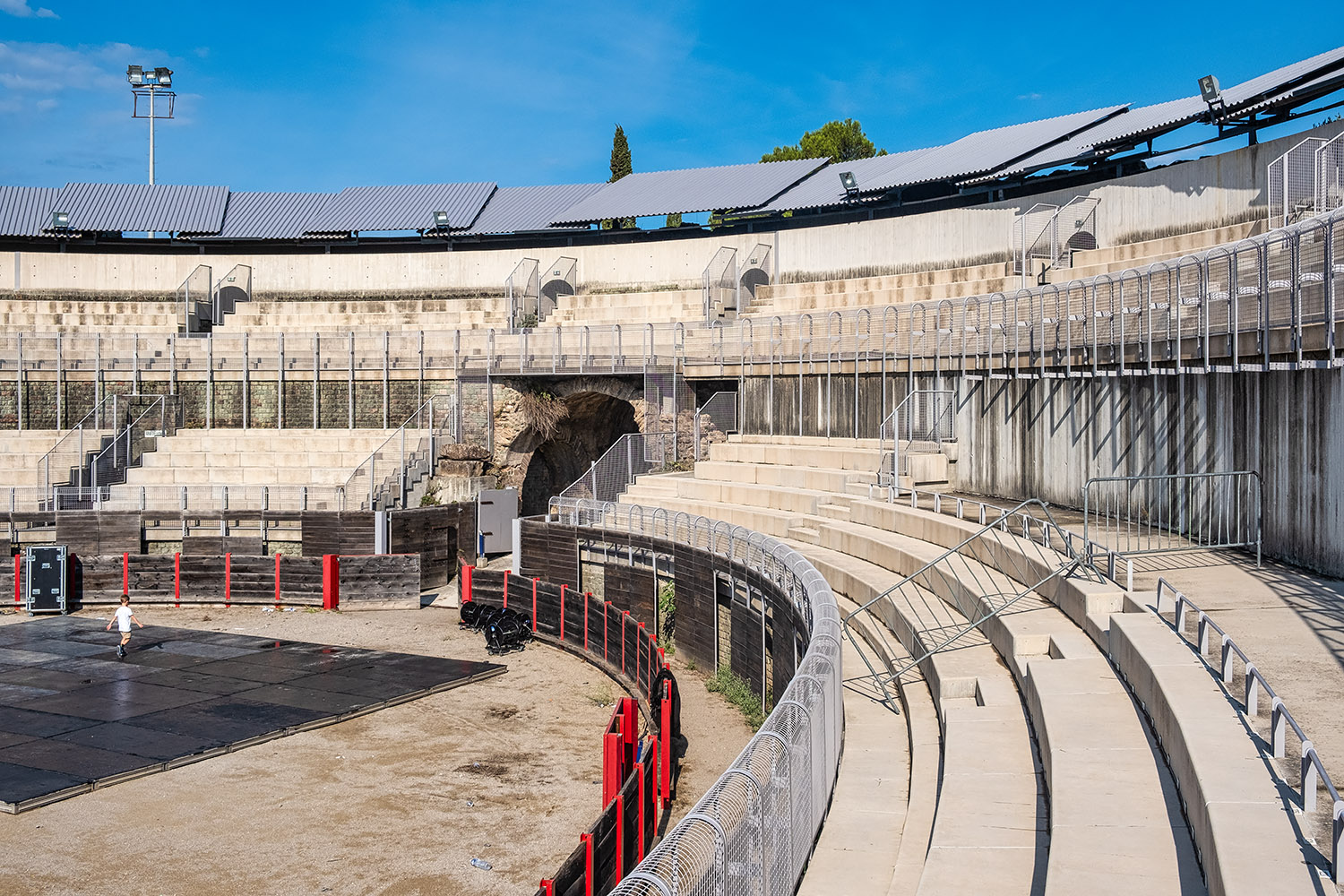
There is not much left of the Roman amphitheater
On August 25, 2021, my friend Didier and I met in Fréjus, a town famous for its Roman heritage. If you are considering a visit to admire the Roman arena and theater... don't bother! There are far better places in the South of France for that sort of thing (Nîmes comes to mind). In 1959, the Malpasset dam broke and the town of Fréjus was flooded with devastating effect (back in March of 2005, I took this photo of what little is left of the ill-fated dam). I don't know whether the Roman structures were significantly damaged in that disaster, but in any case, there are plenty of better reasons to visit Fréjus. The old part of town is charming, the fortified Bishop's Palace is definitely worth seeing, and there is a small but interesting archeological museum. The town is also located right next to Saint-Raphaël, a somewhat more touristy place that has a more attractive seaside, but Fréjus definitely has a more interesting old town.
Click on any image to see a larger (2400 x 1600 pixel) version!

|
There is not much left of the Roman amphitheater |
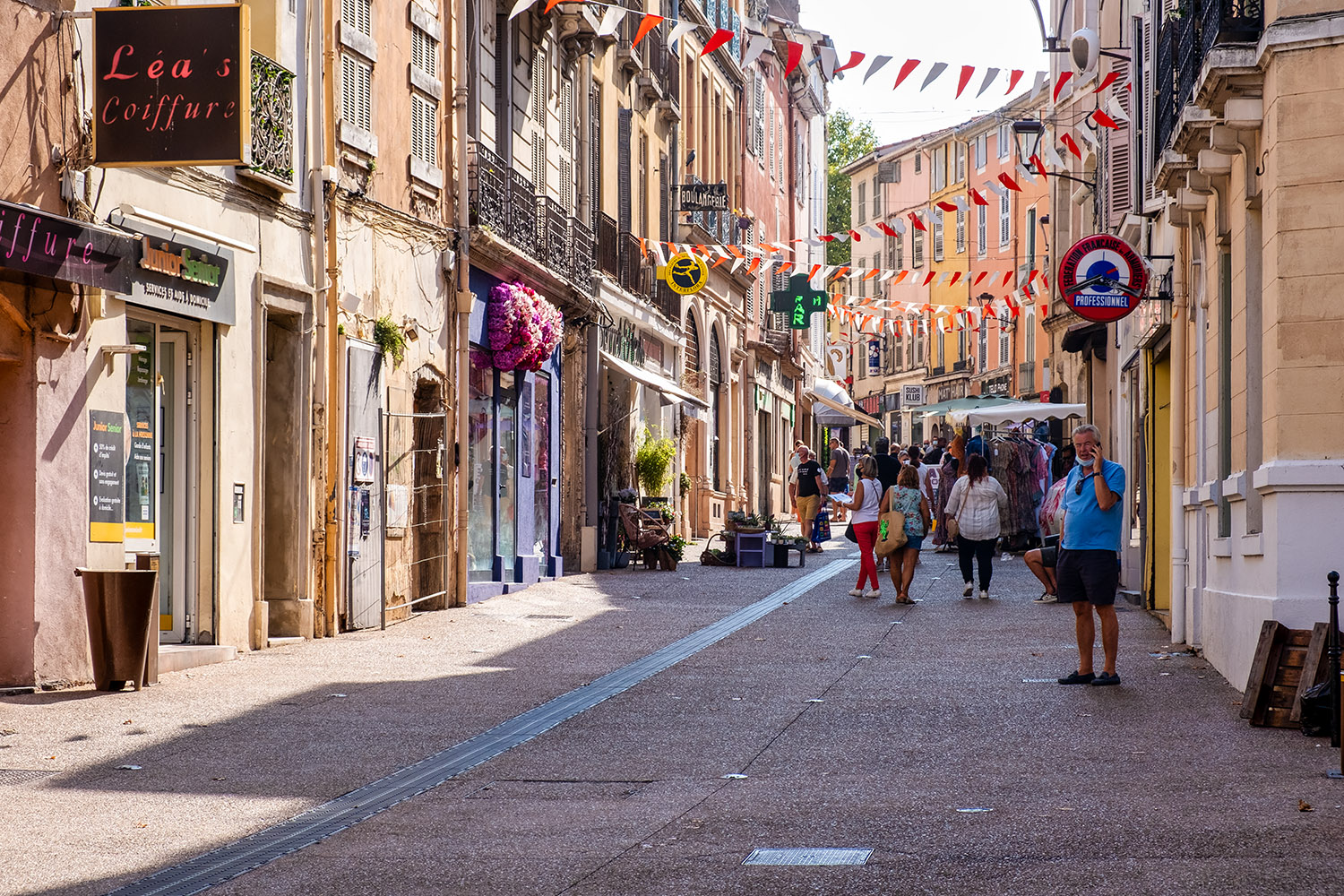
|
Walking up the Rue du Général de Gaulle |
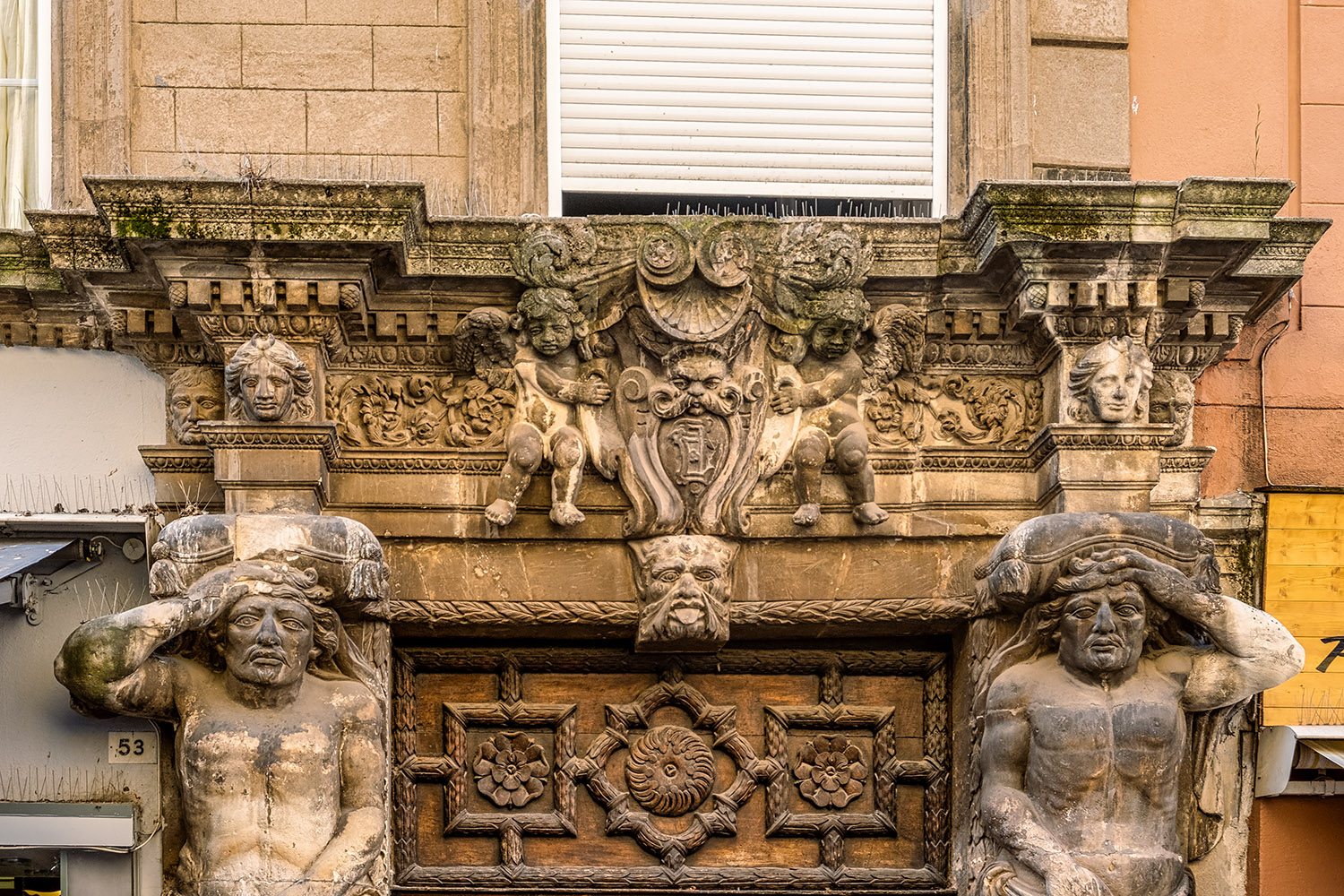
|
Very elaborate lintel in the same street |
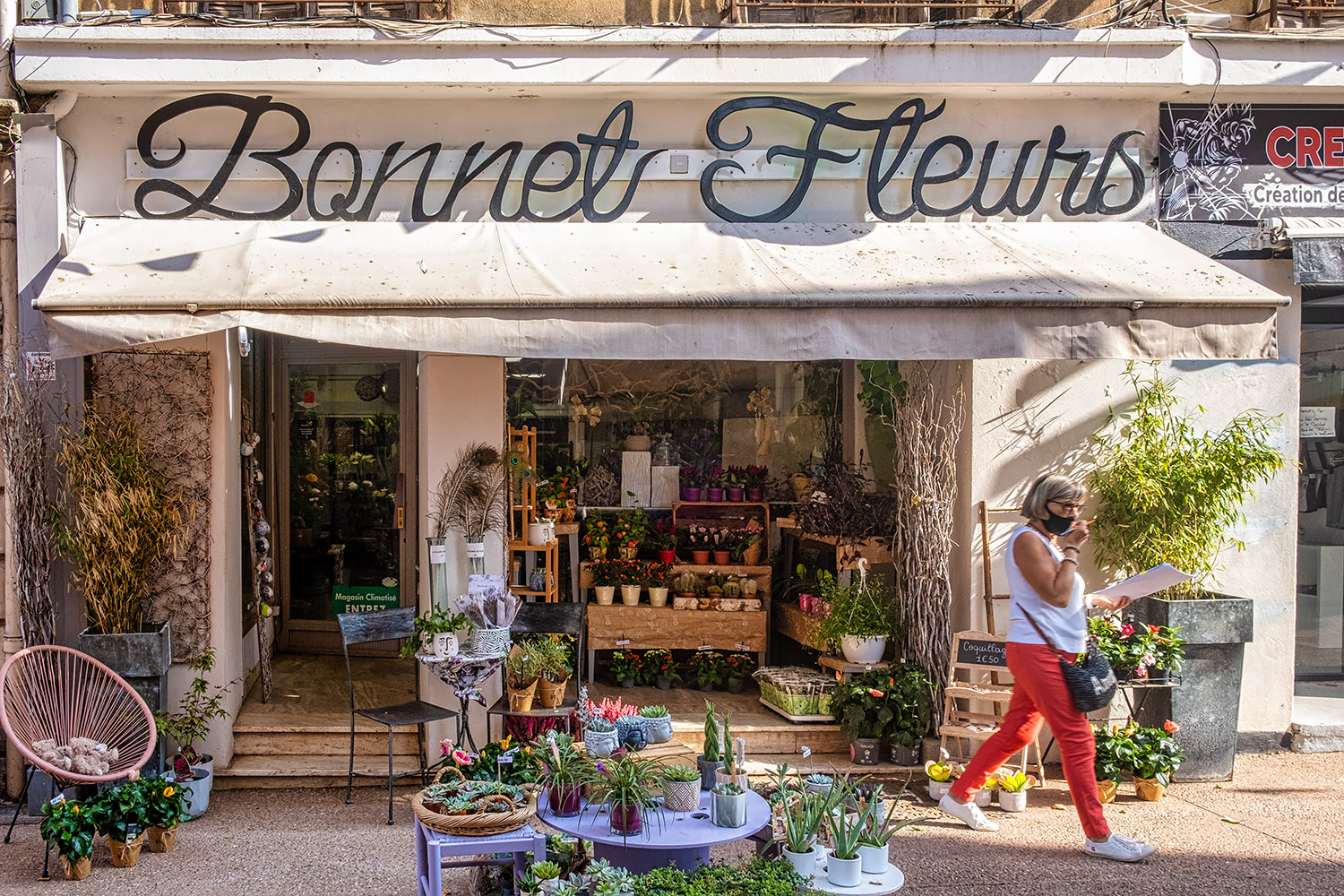
|
Florist's shop |

|
Arriving in the center of the old town |
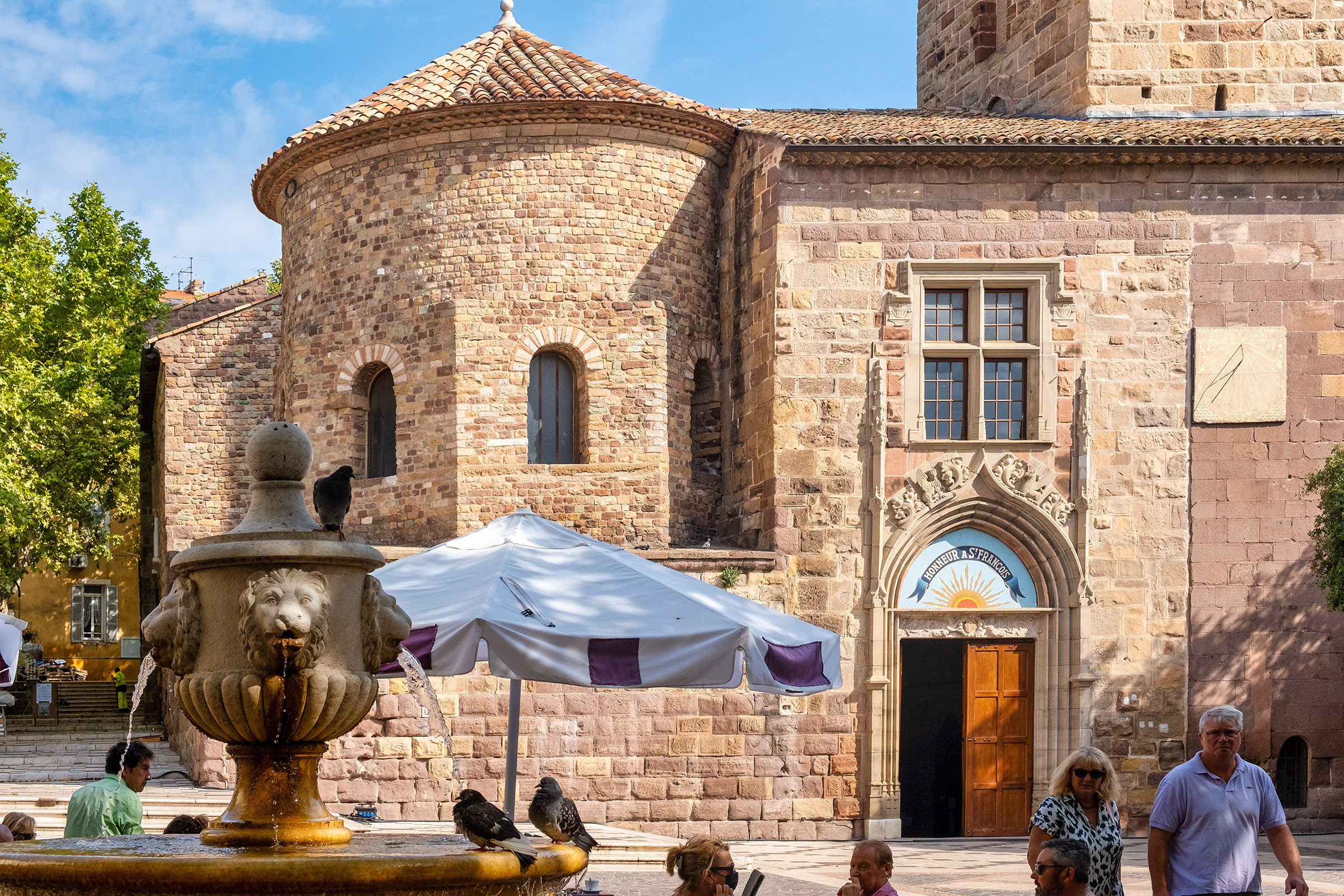
|
In front of the Saint-Léonce cathedral (note the plain-looking door; it protects a far more elaborate one) |
The Bishop's Palace was fortified between the 11th and 14th centuries. On the map, the numbers represent the following: 1. Today's south entrance to the cathedral was created during the Renaissance. It features gorgeous sculpted wood panels that are protected by plain wood boards and only visible during guided tours. 2. The baptistery dates from the 5th century. 3. The narthex at the entrance of the church is framed by four huge columns that support the weight of the belfry. 4. The Notre Dame church has become the cathedral during the Middle Ages. 5. The Saint-Étienne church probably dates from 11th century. In a side chapel, we find the altarpiece dedicated to Sainte Marguerite and the stone altar of the old church. 6. The cloister was built in the 13th century and initially featured a stone ceiling; this was replaced with a wooden one in the 14th century when a floor was added above it. The cloister was how the faithful accessed the churches; for their edification, countless scenes and people from daily life and a weird bestiary were painted on the ceiling in a sort of early Facebook. 7. The storeroom. 8. The house of the provost. 9. The cistern in the garden. It was used to collect the rainwater from the roofs. 10. The staircase was built from the tiers of the old Roman theatre, so the risers are very tall.

|
Map of the Bishop's Palace |

|
During the Middle Ages, the Notre Dame church became the cathedral (4 on the map) |

|
The altarpiece dedicated to Sainte Marguerite and the stone altar of the old Saint-Étienne church (5 on the map) |
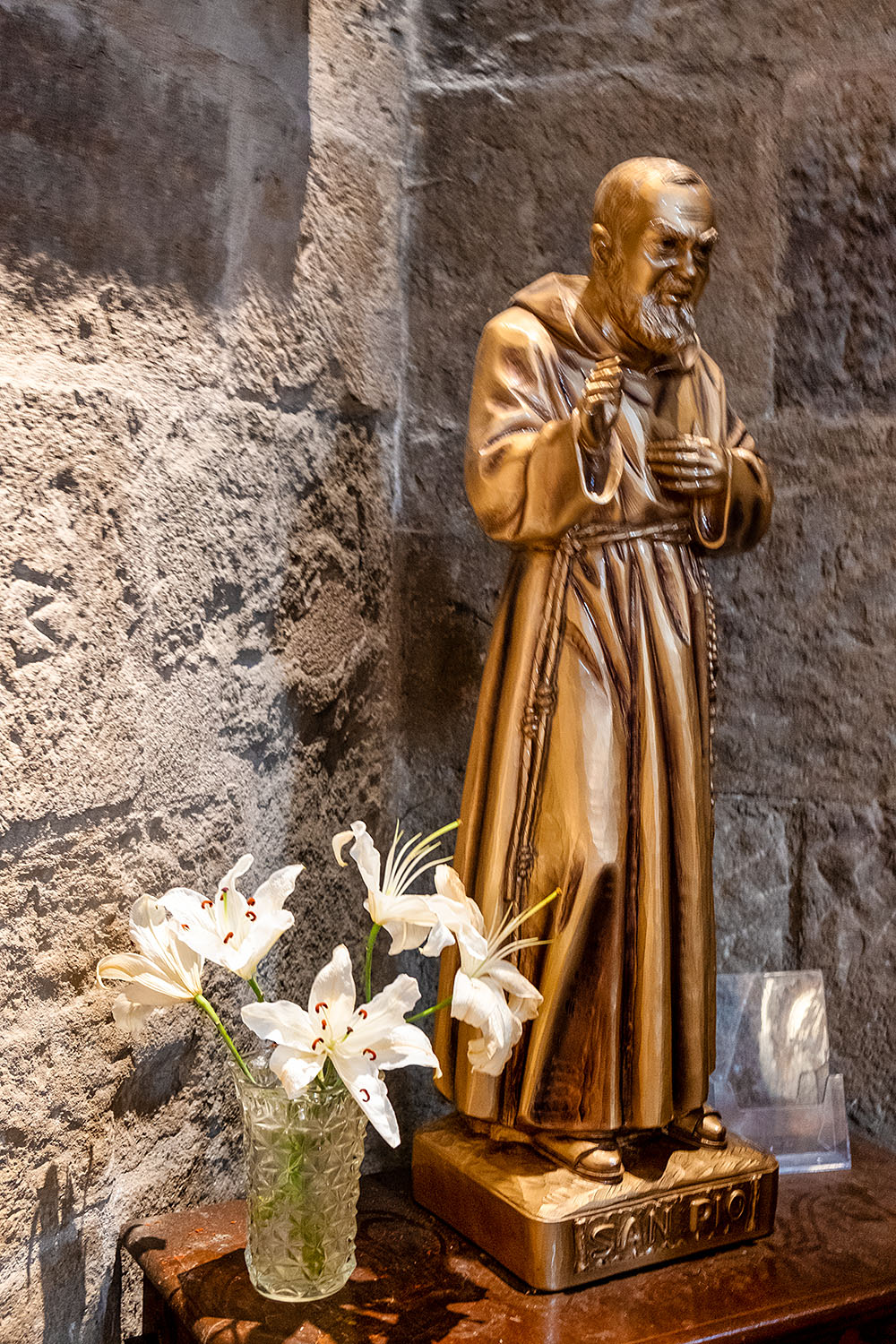
|
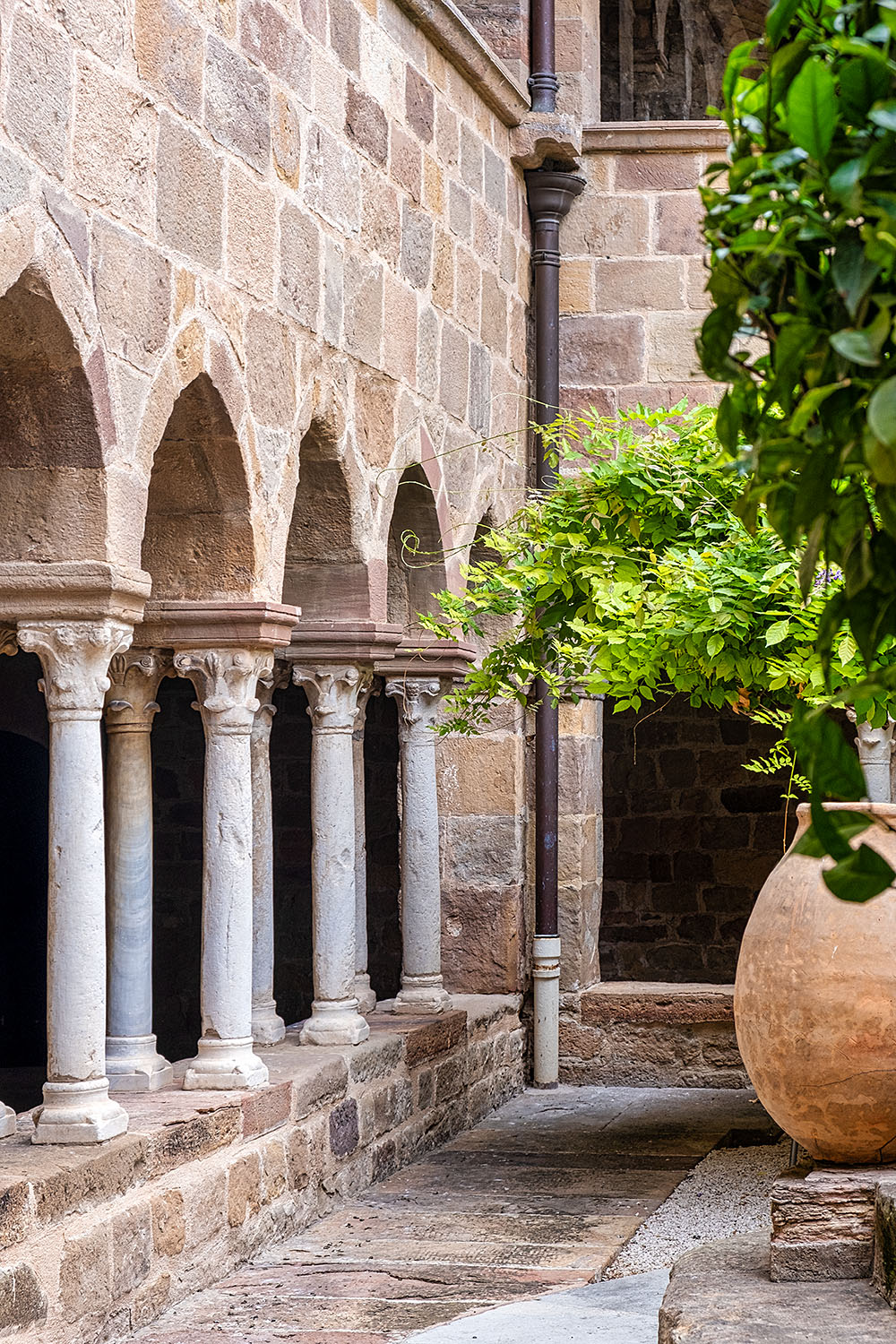
|
Statue of Padre Pio in the Saint-Étienne church (5 on the map) |
The cloister garden (6 on the map) |
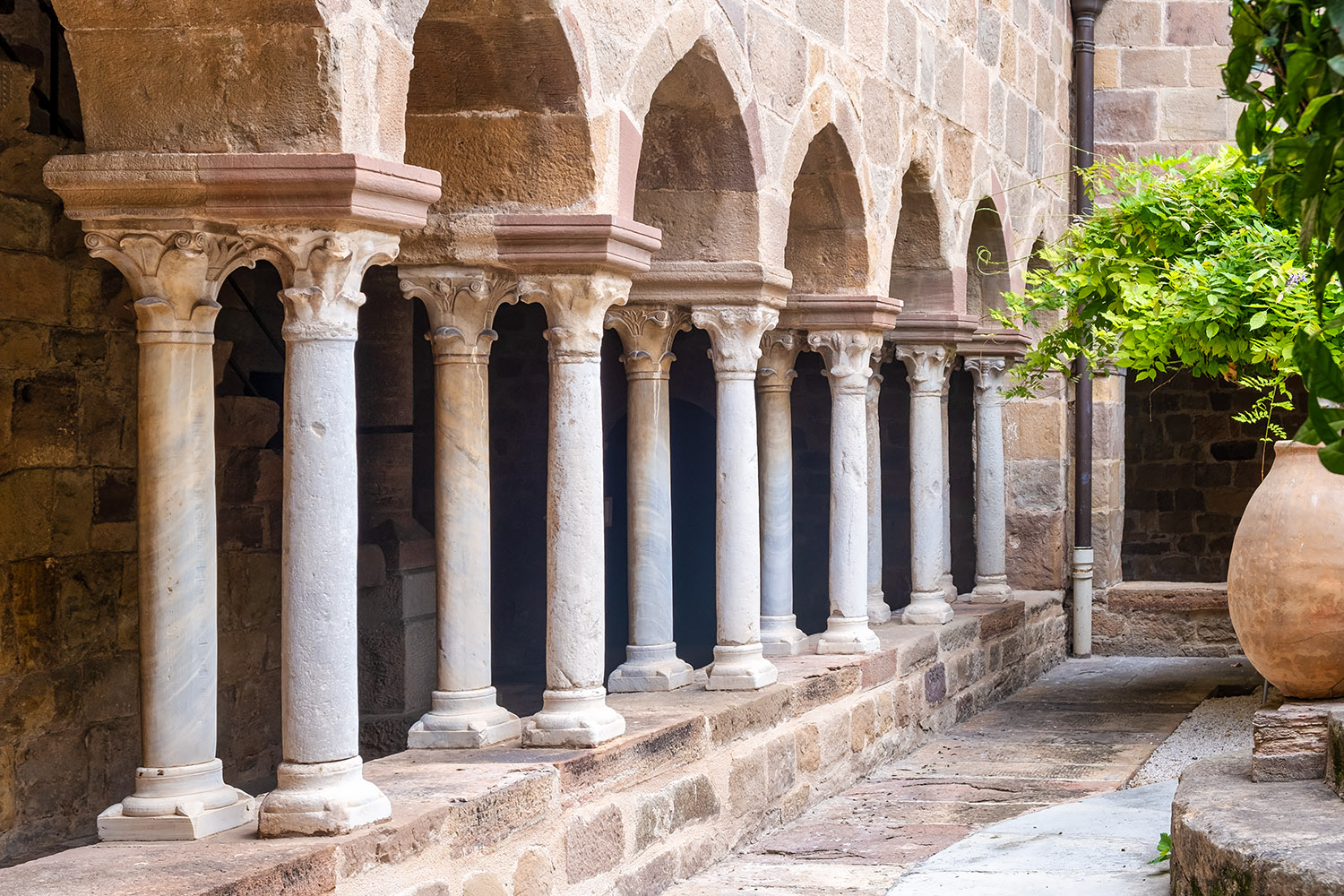
|
The cloister with its thin columns (6 on the map) |
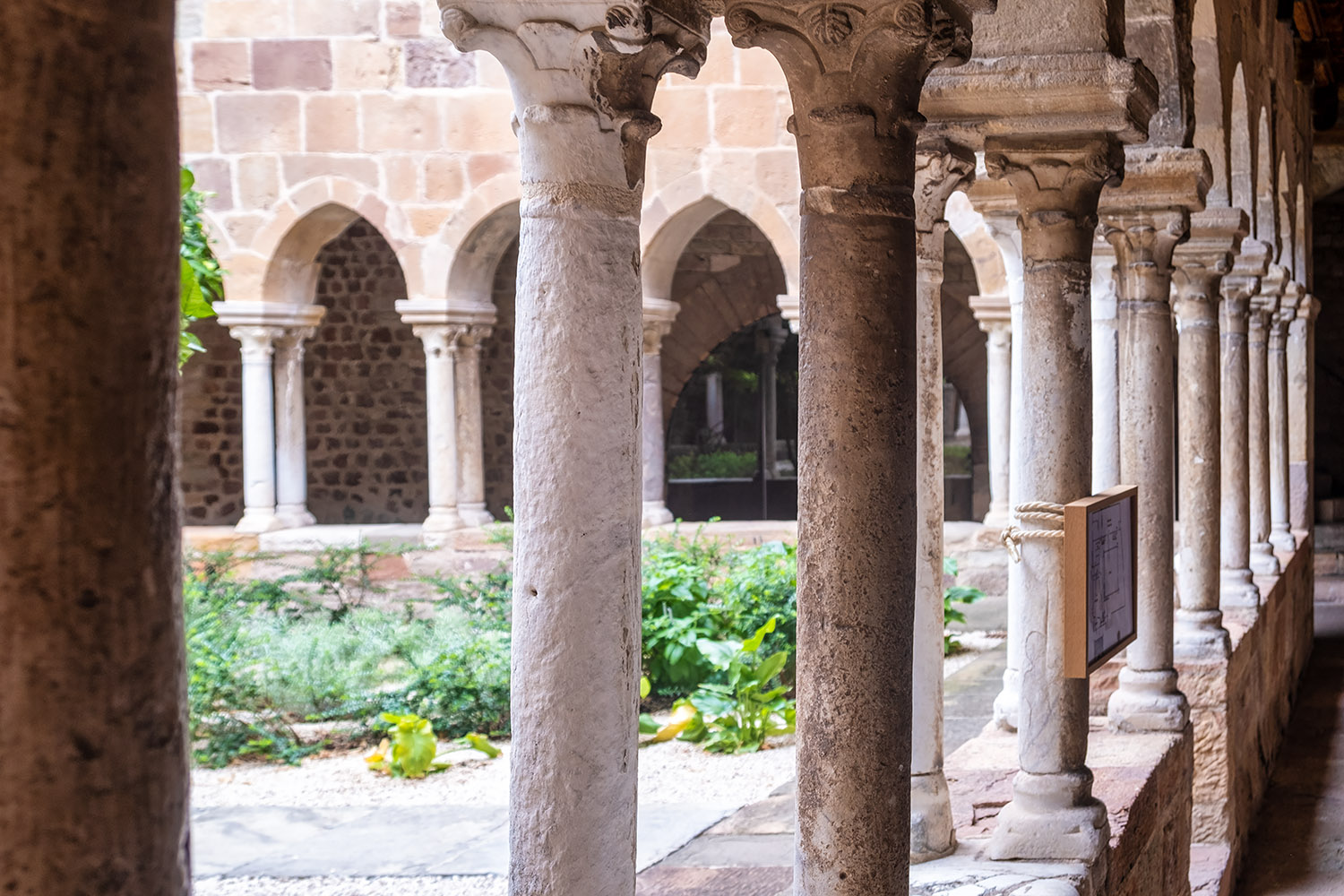
|
The cloister with its thin columns (6 on the map) |
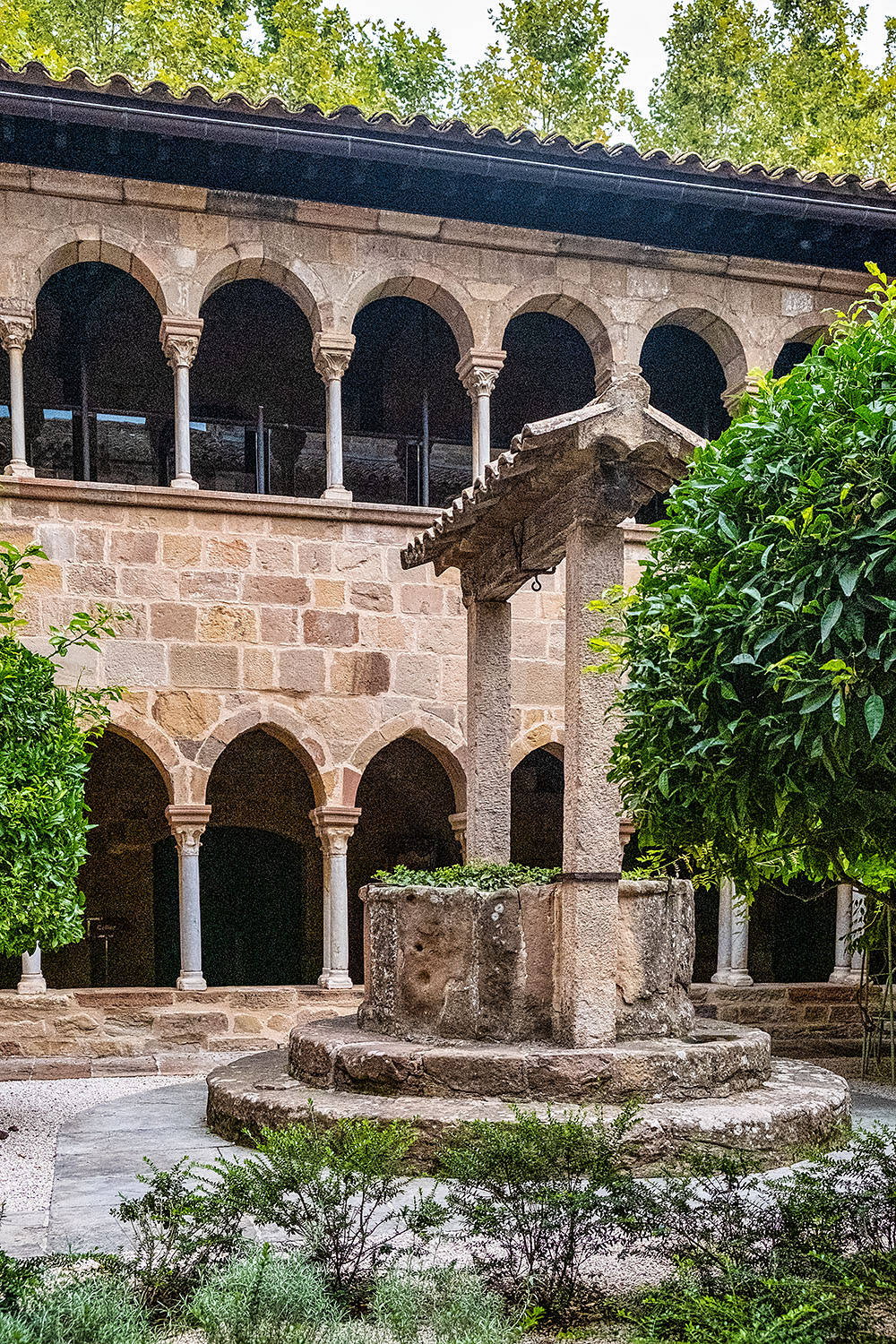
|
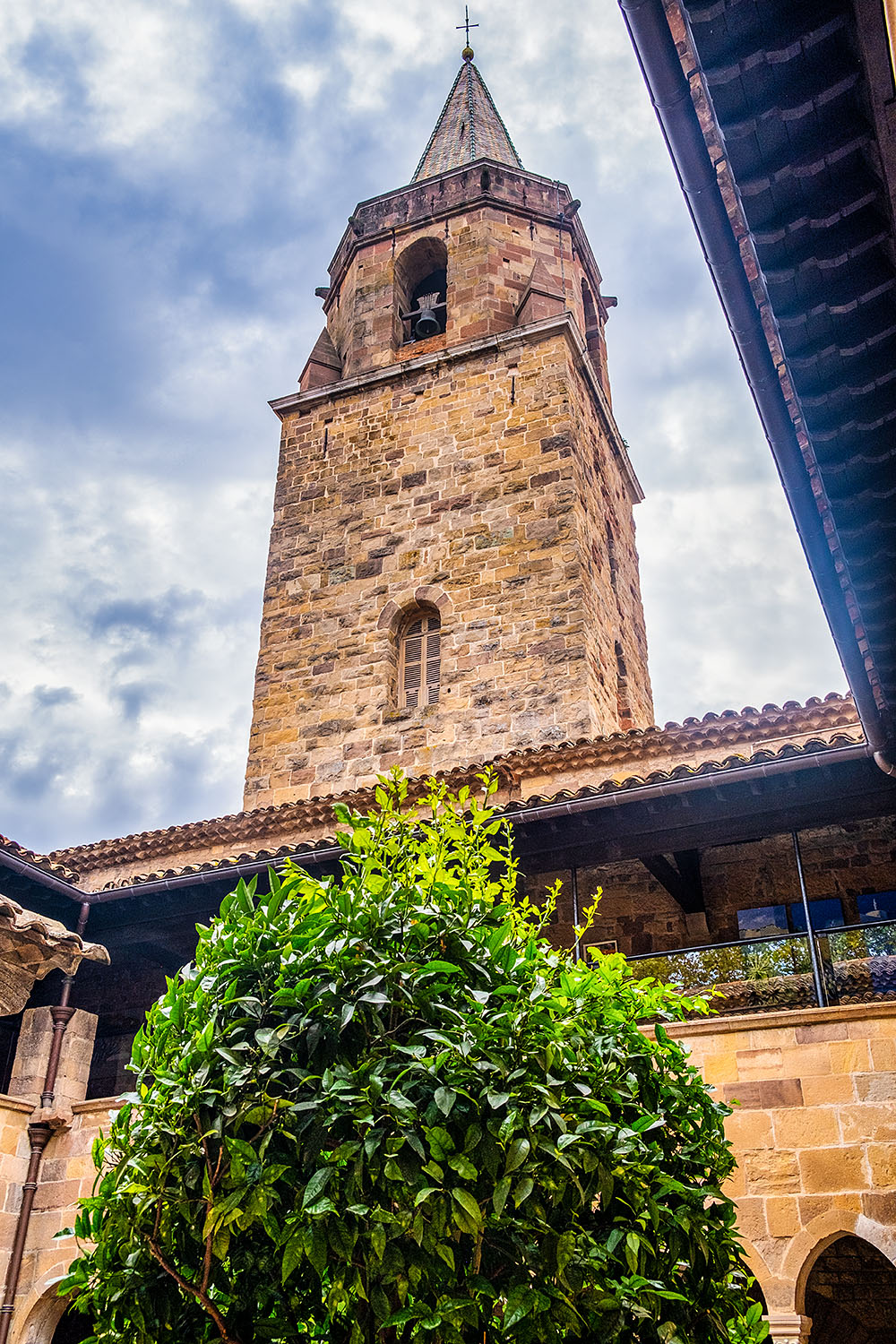
|
The cistern in the cloister garden collects rainwater |
The massive belfry seen from the cloister |
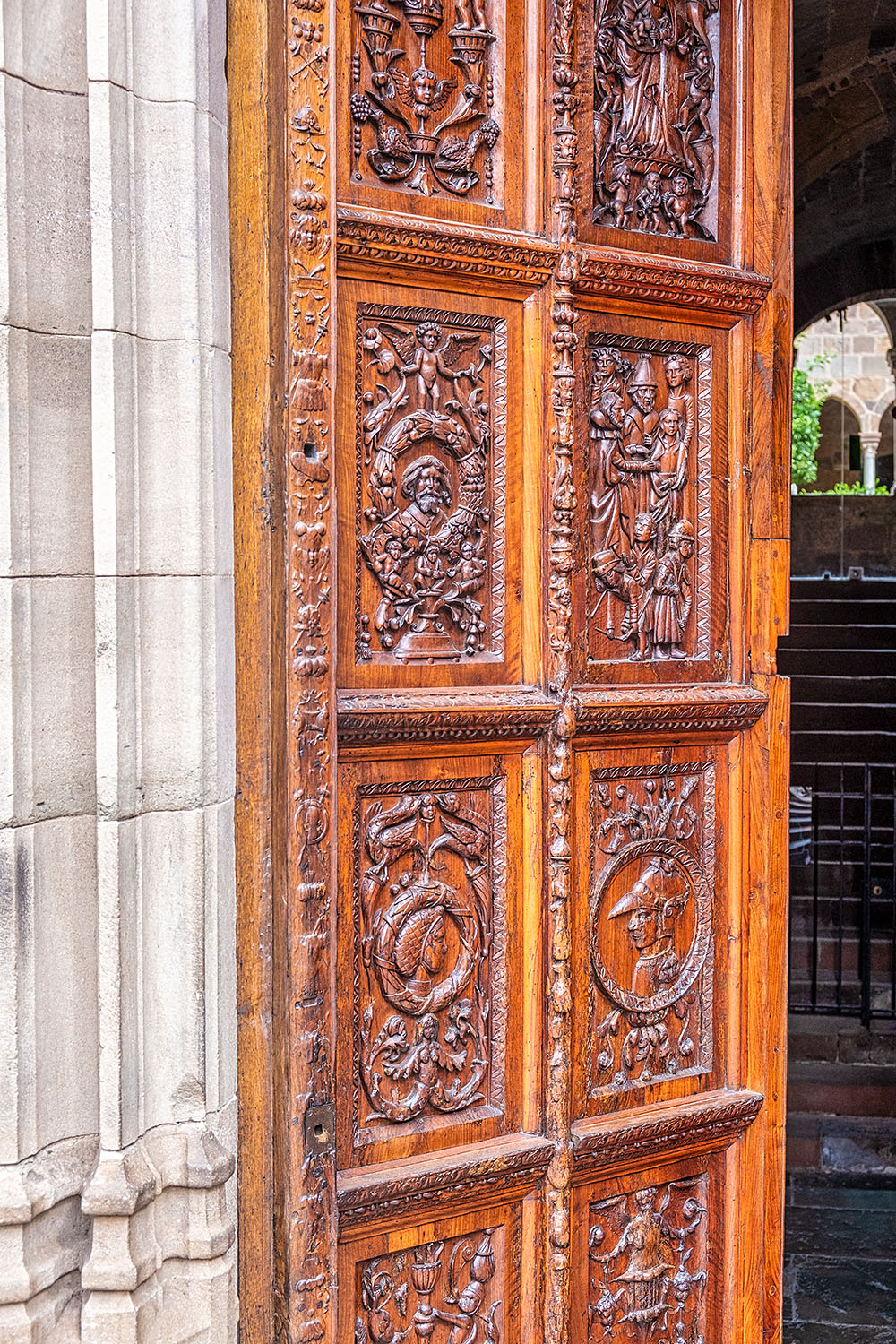
|
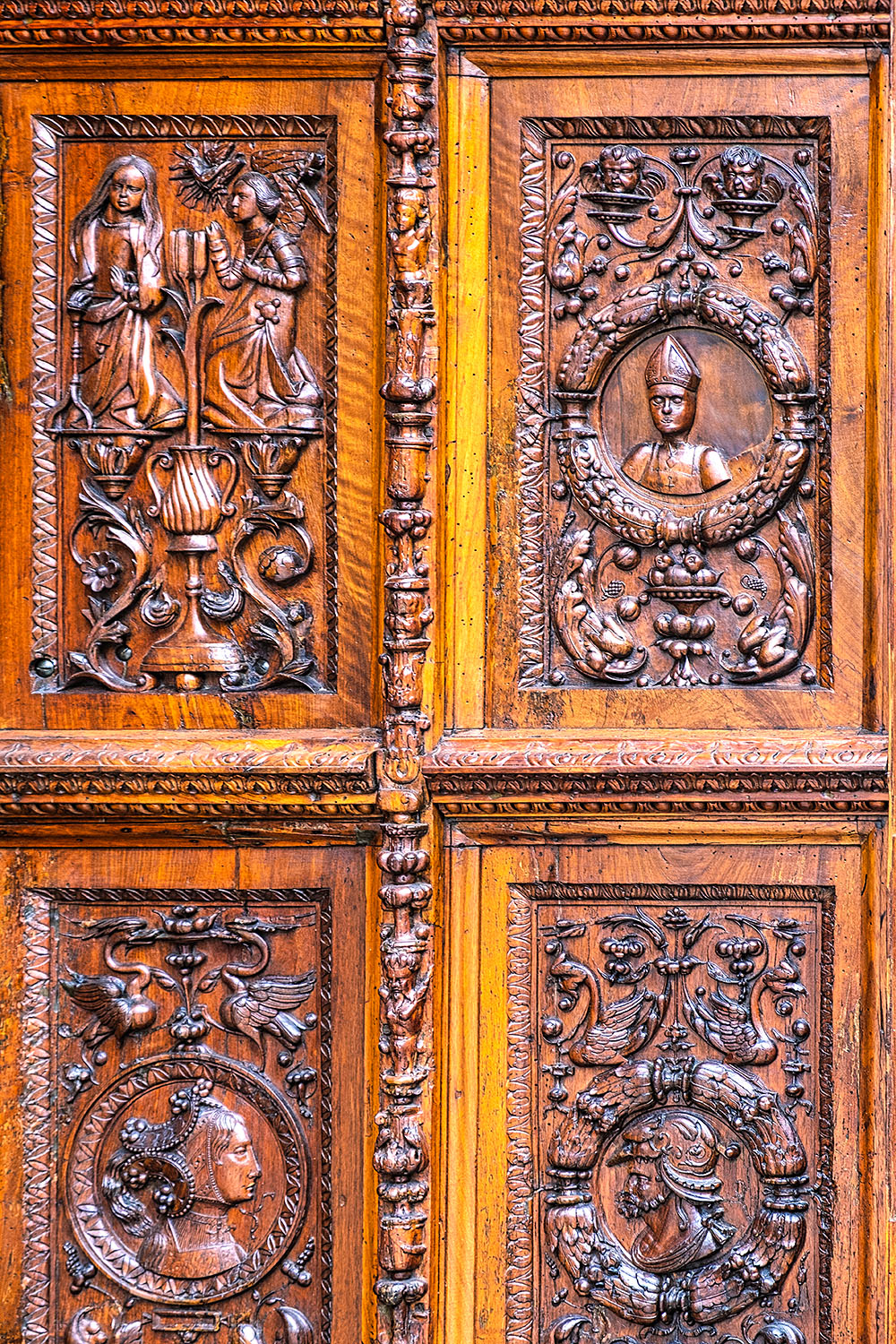
|
With the plain protective wood covers removed... |
...we can admire the beautifully carved church doors. |

|
Closeup of two panels of the carved church doors (1 on the map) |
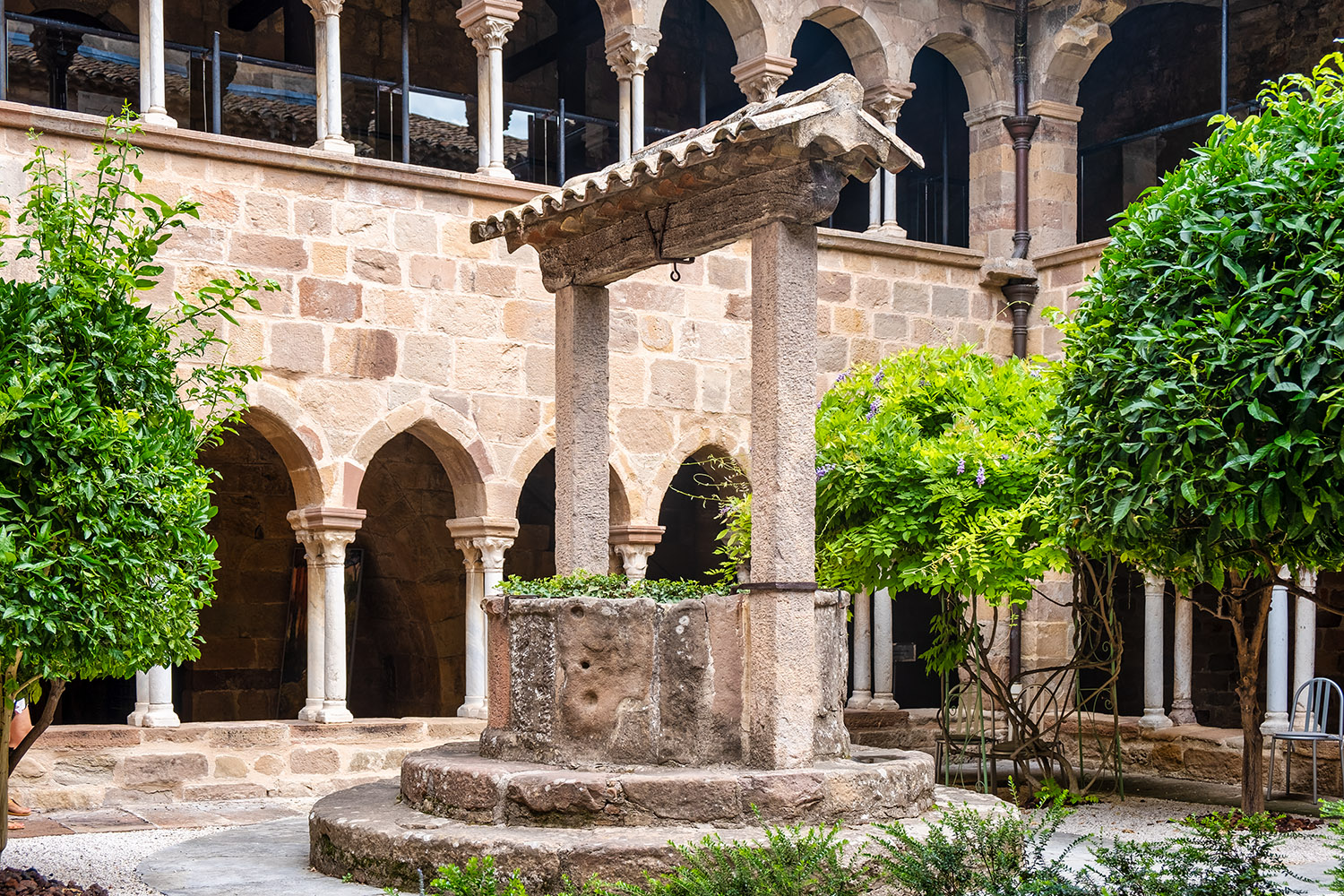
|
Not a well, but a cistern in the cloister garden to collect the rainwater from the roof (9 on the map) |
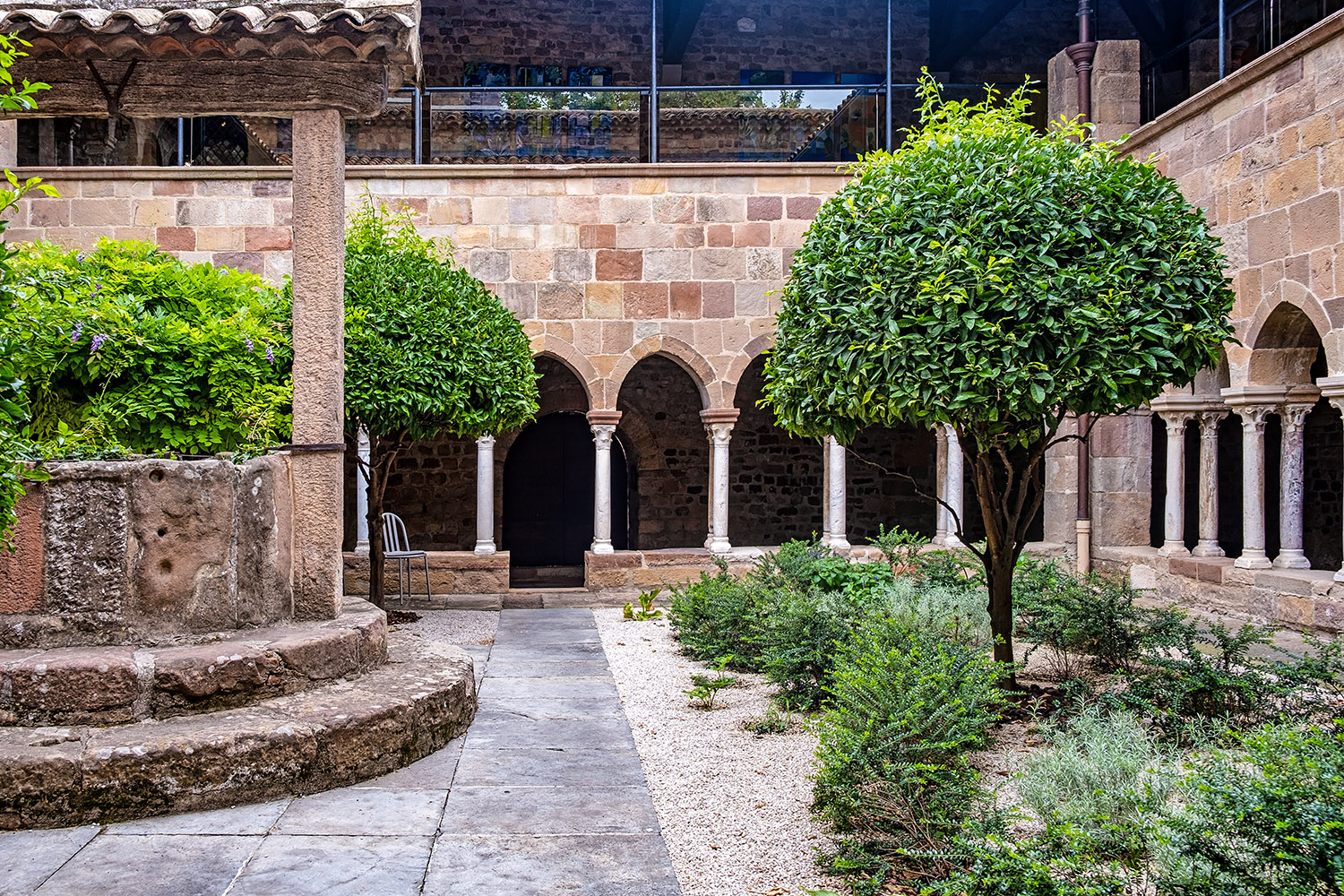
|
In the cloister garden (6 on the map) |
At the beginning of the 14th century, the stone ceiling of the cloister was replaced with a wooden structure made of larch. In the middle of the 15th century, some 1200 rectangular paintings were added to the ceiling. These fall into three different categories: religion (canons, saints, bishops, angels, demons); everyday life (professions, citizens, troubadours, war); a bestiary, the most represented group (imaginary animals, such as dragons, hybrid creatures, half beast, half human, and even bizarre, fictitious objects). As we don't know the context of this creation, its meaning remains a mystery. Of the original 1200 small paintings, only some 300 are still somewhat visible; the others were destroyed or erased by humidity.
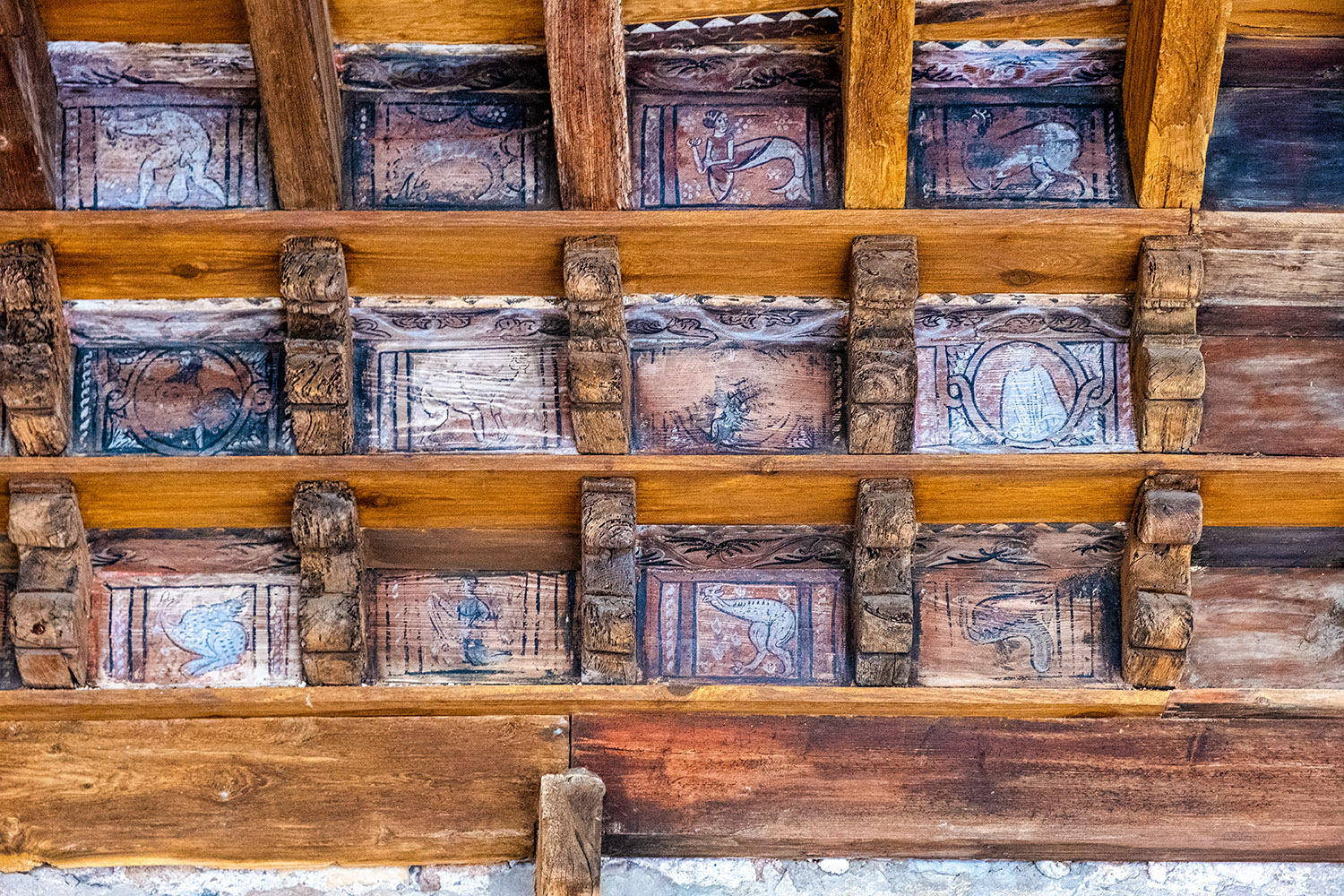
|
The wooden ceiling of the cloister: a kind of medieval Facebook |
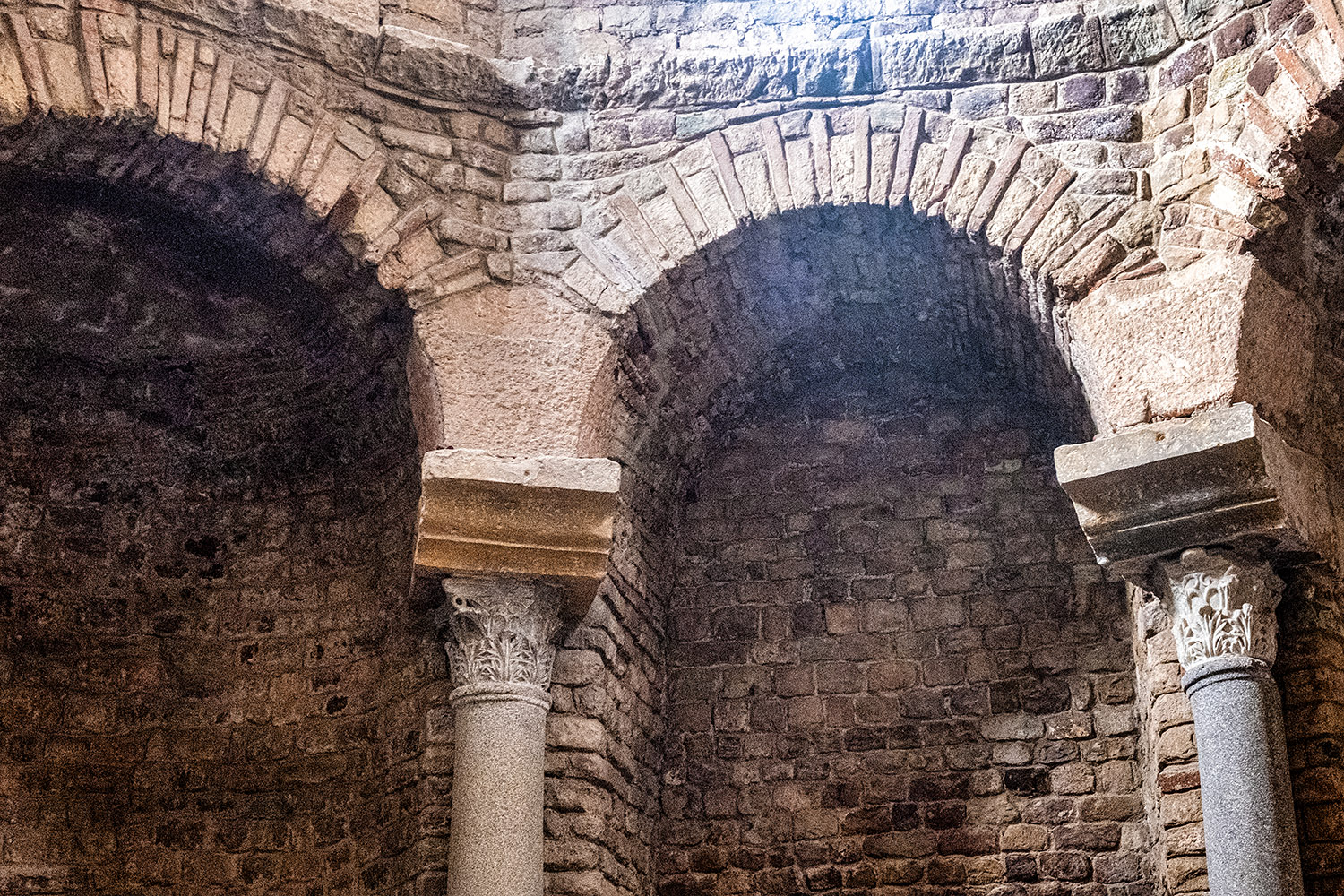
|
The baptistery is one of the oldest in France and dates from the 5th century (2 on the map) |
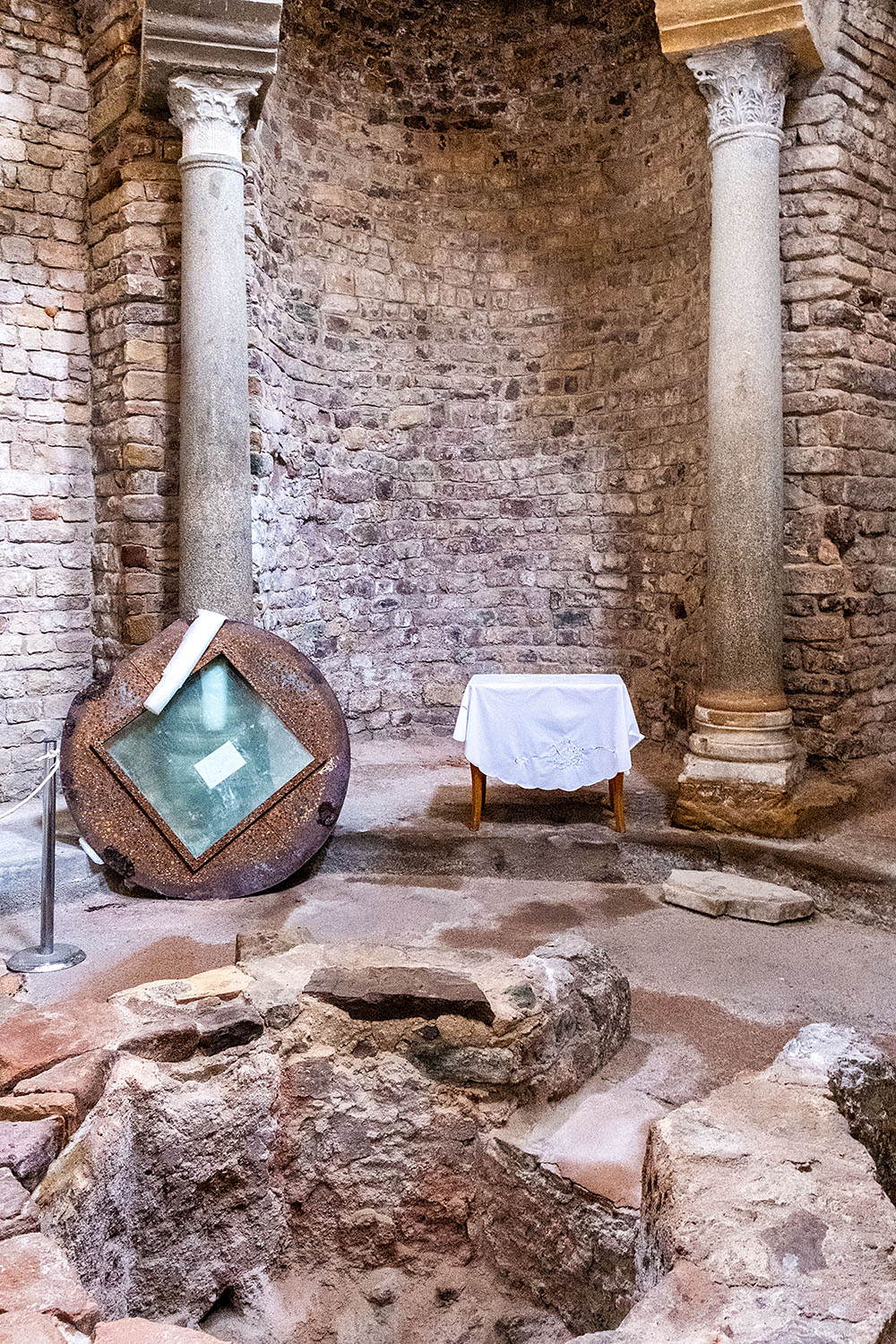
|
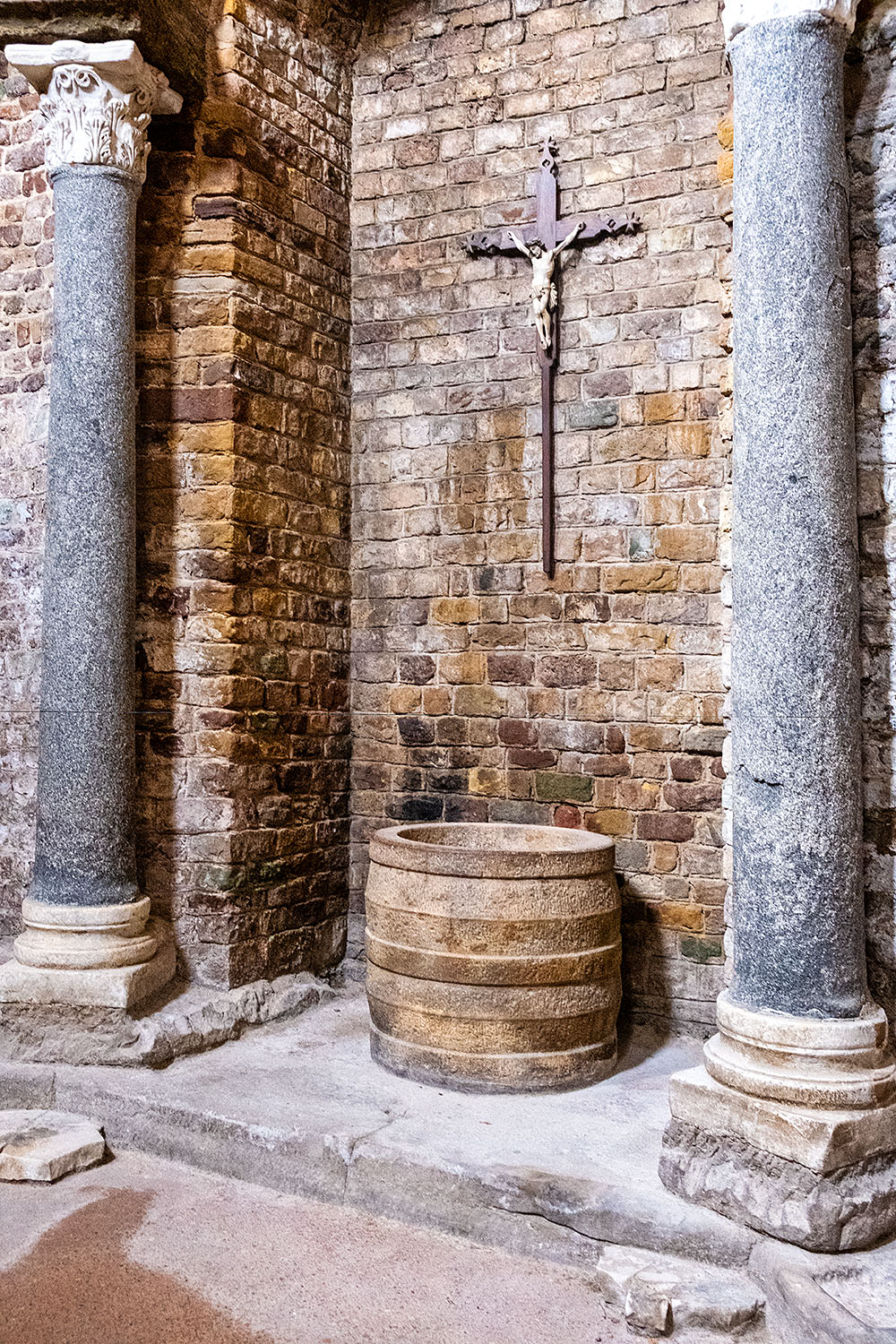
|
In the baptistery (2 on the map) |
In the baptistery (2 on the map) |
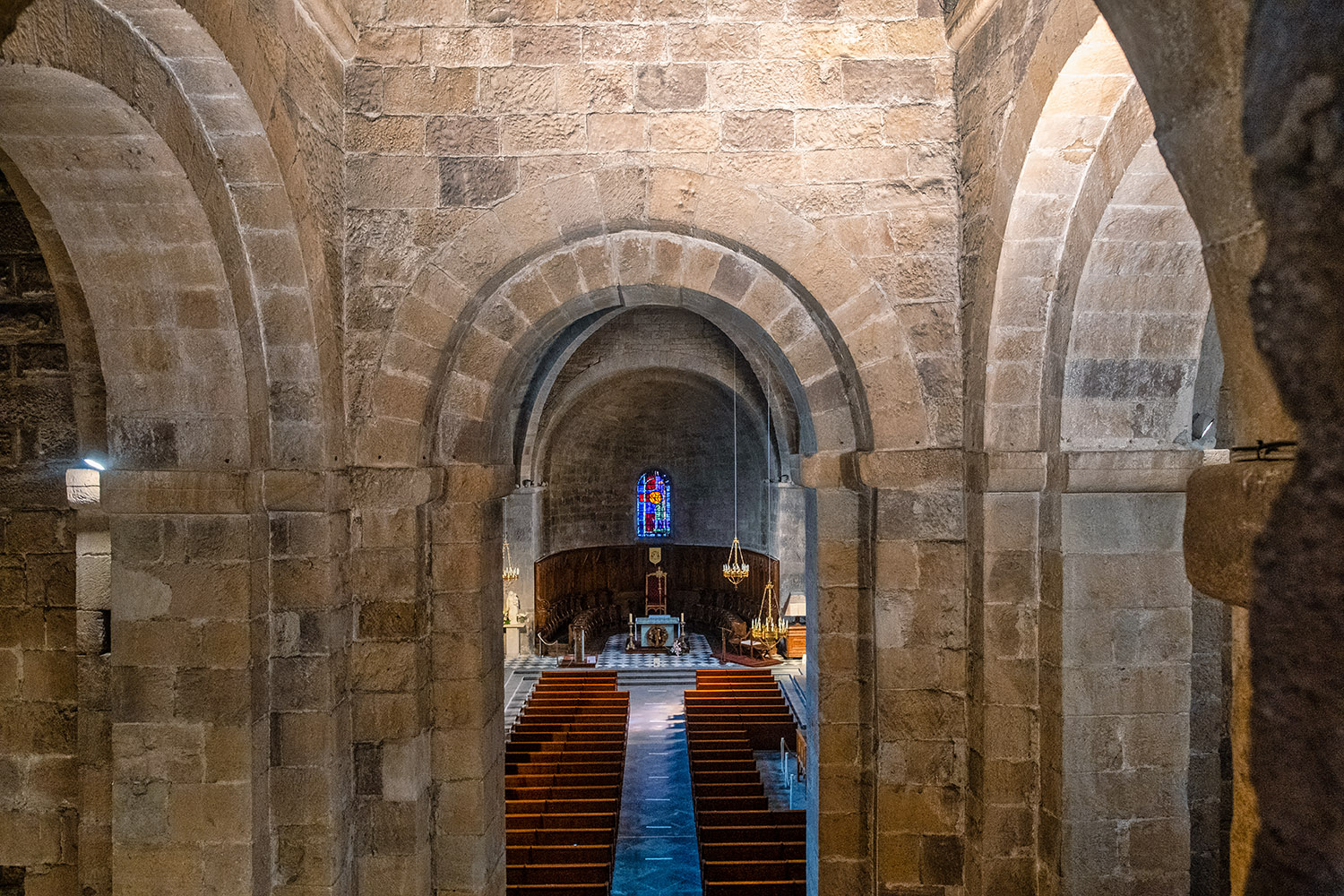
|
Looking through the narthex into the Notre Dame church |

|
The view from the storeroom (7 on the map) |

|
Portrait of bishop de Fleury in the chapter house |

|
On the place Camille Formigé in front of the cathedral |
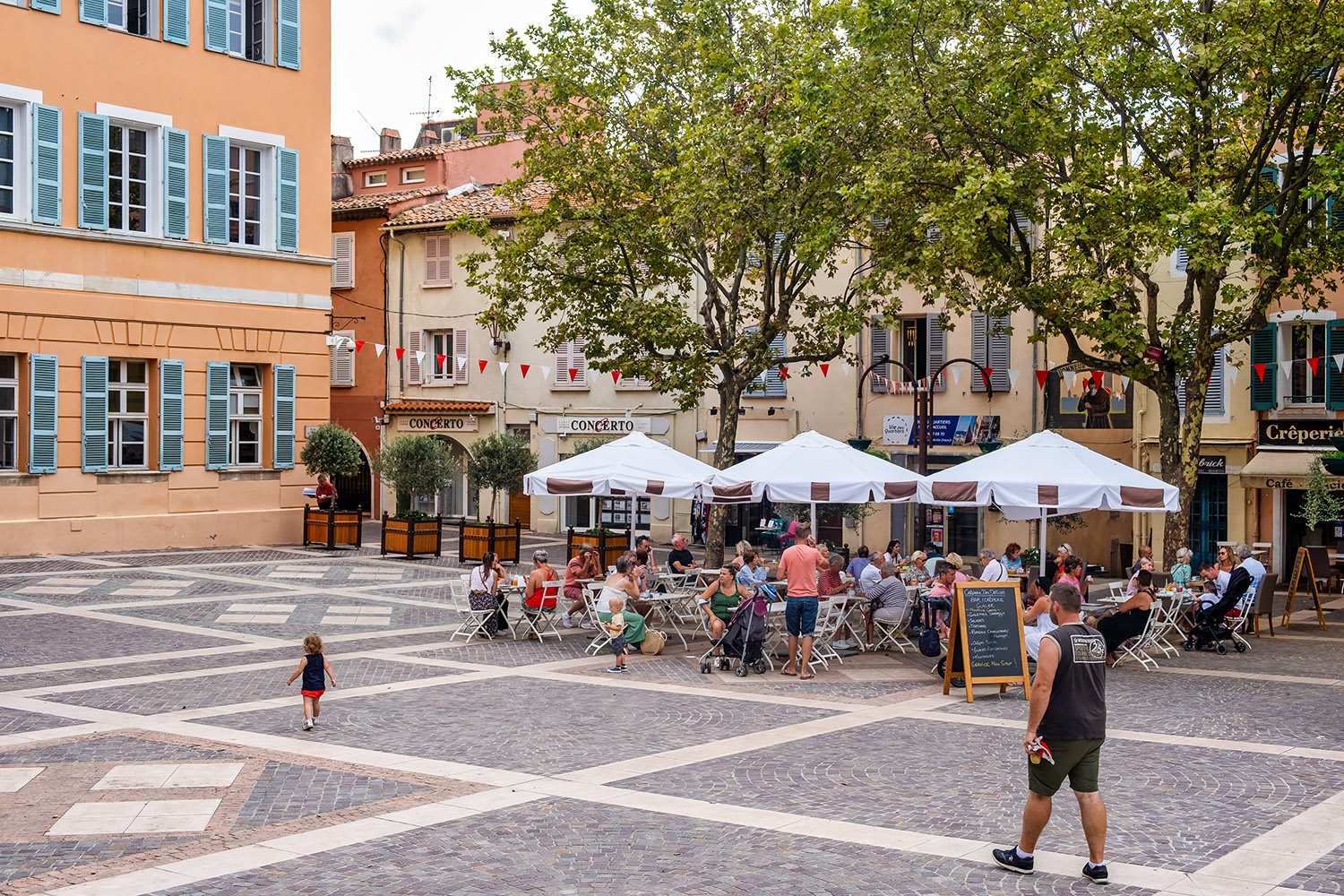
|
On the place Camille Formigé in front of the cathedral |
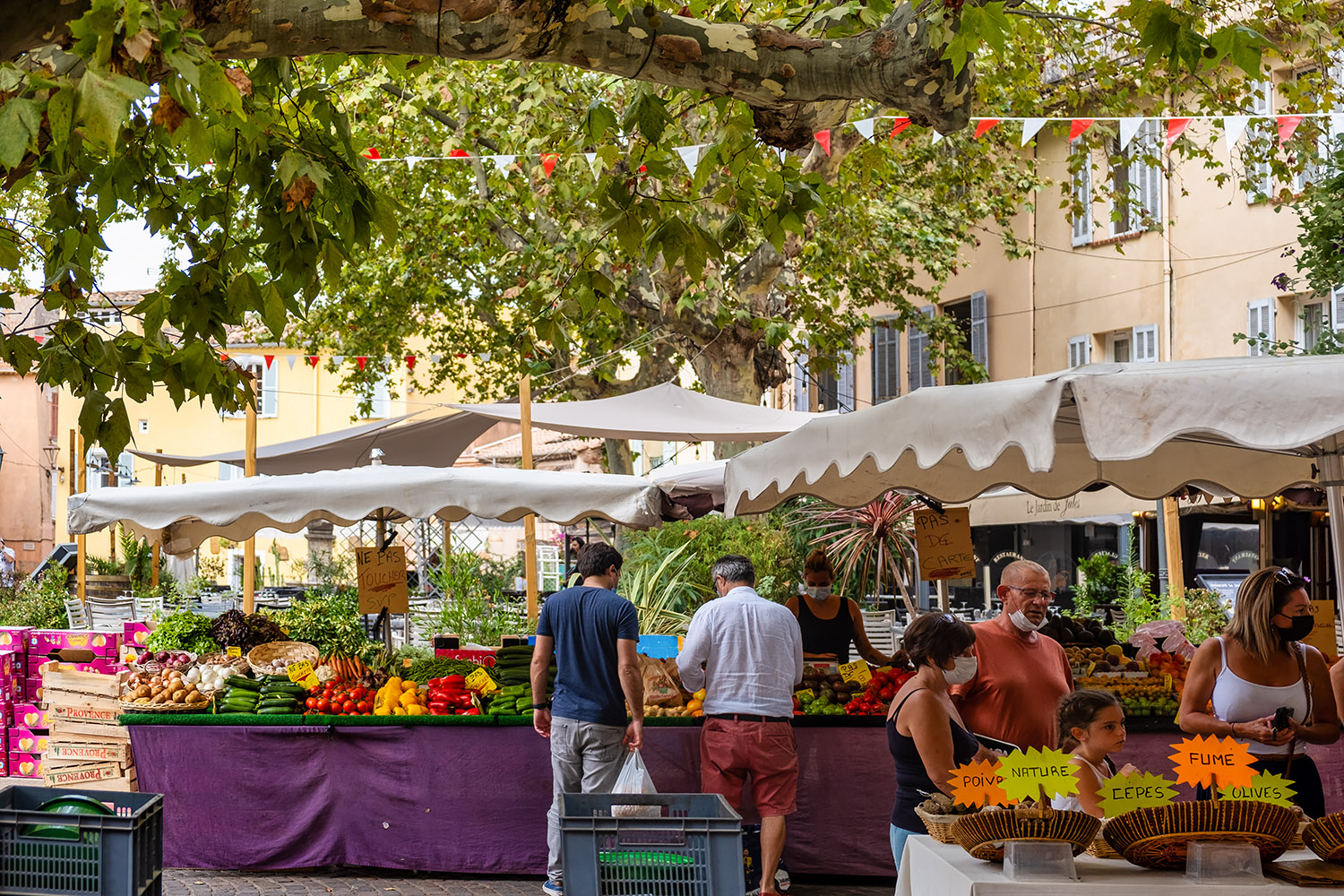
|
The market on the place Paul Albert Février next to the cathedral |

|
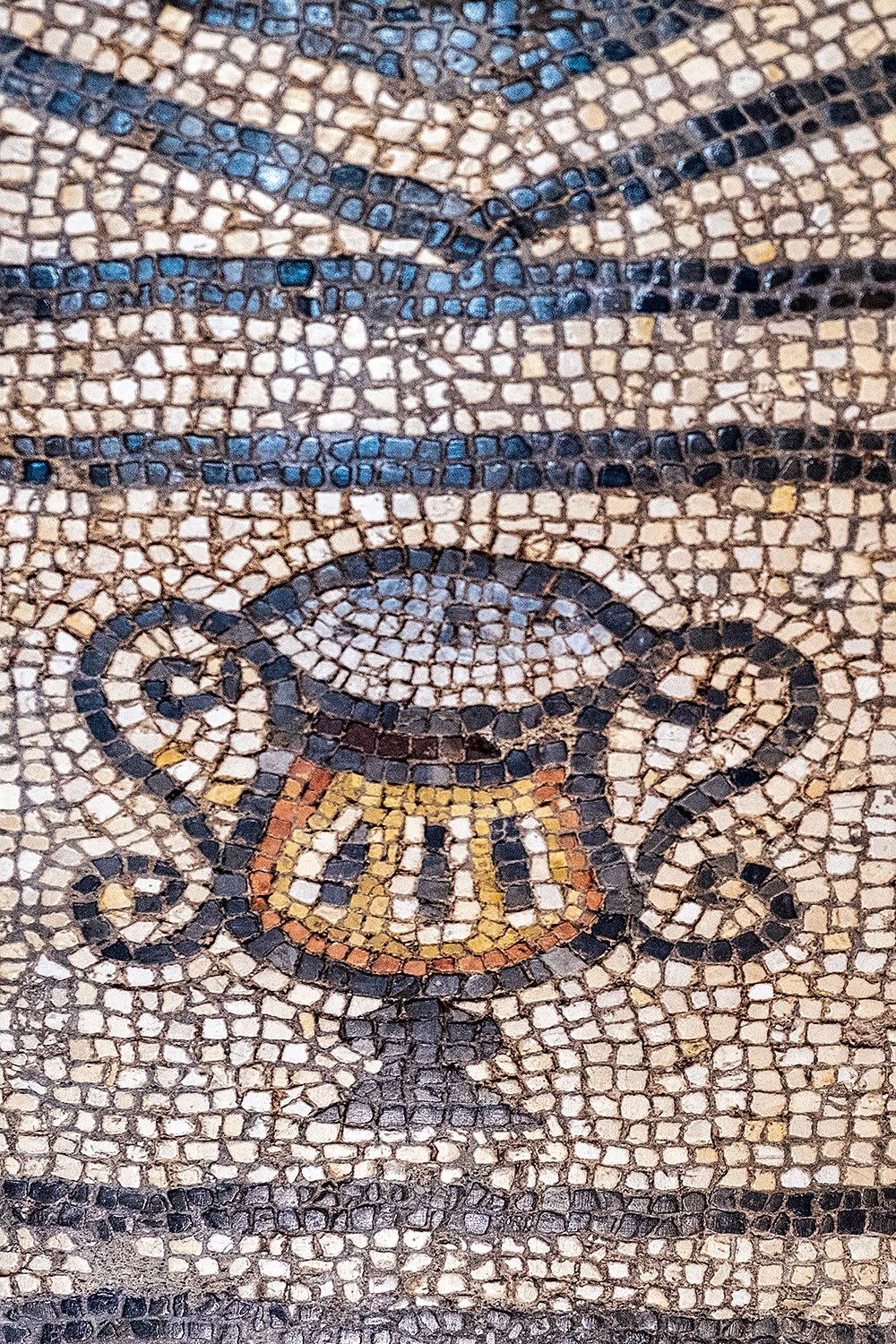
|
Heading to the archeological museum |
Detail of a mosaic in the museum |
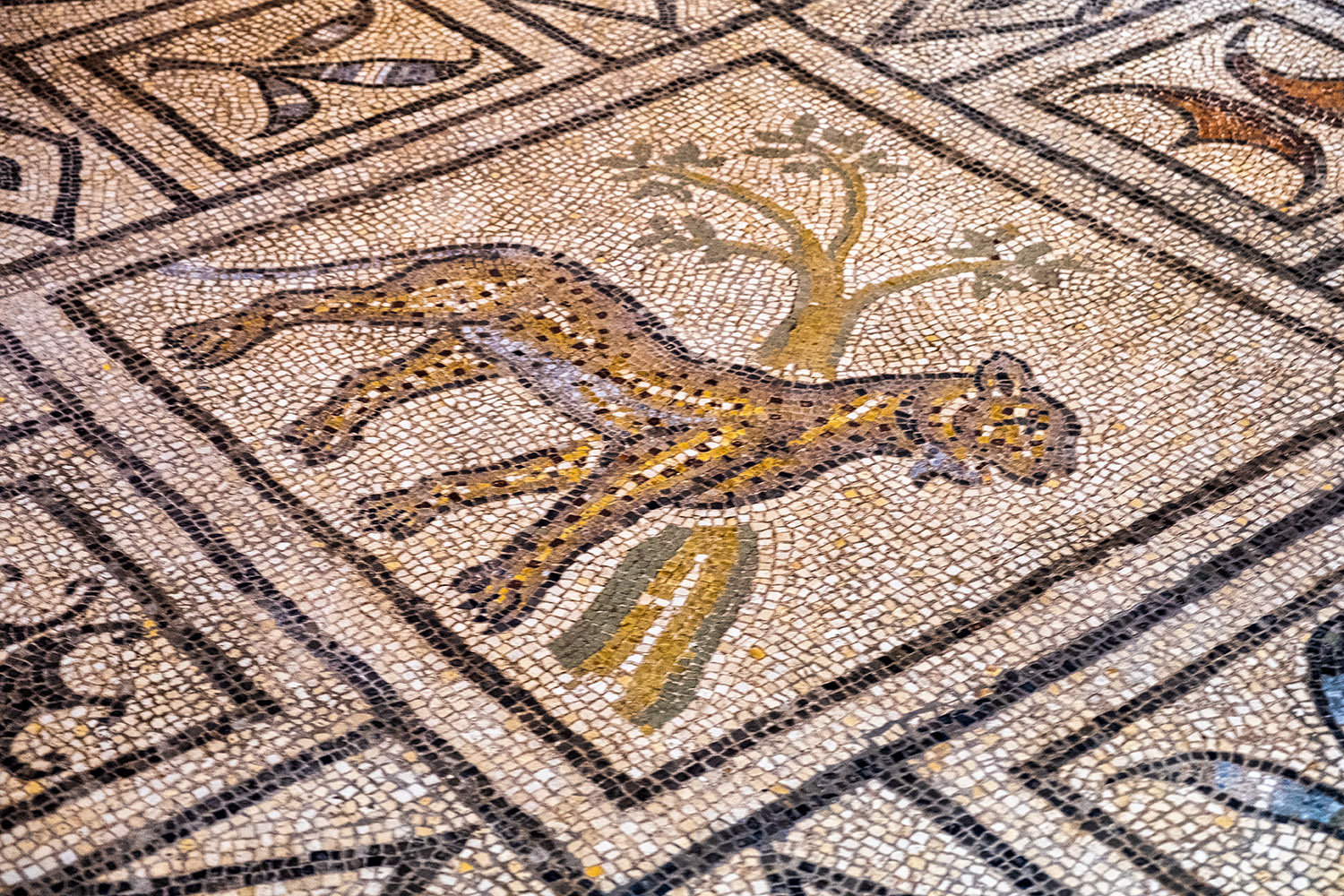
|
The panther mosaic in the archeological museum dates from the third century |
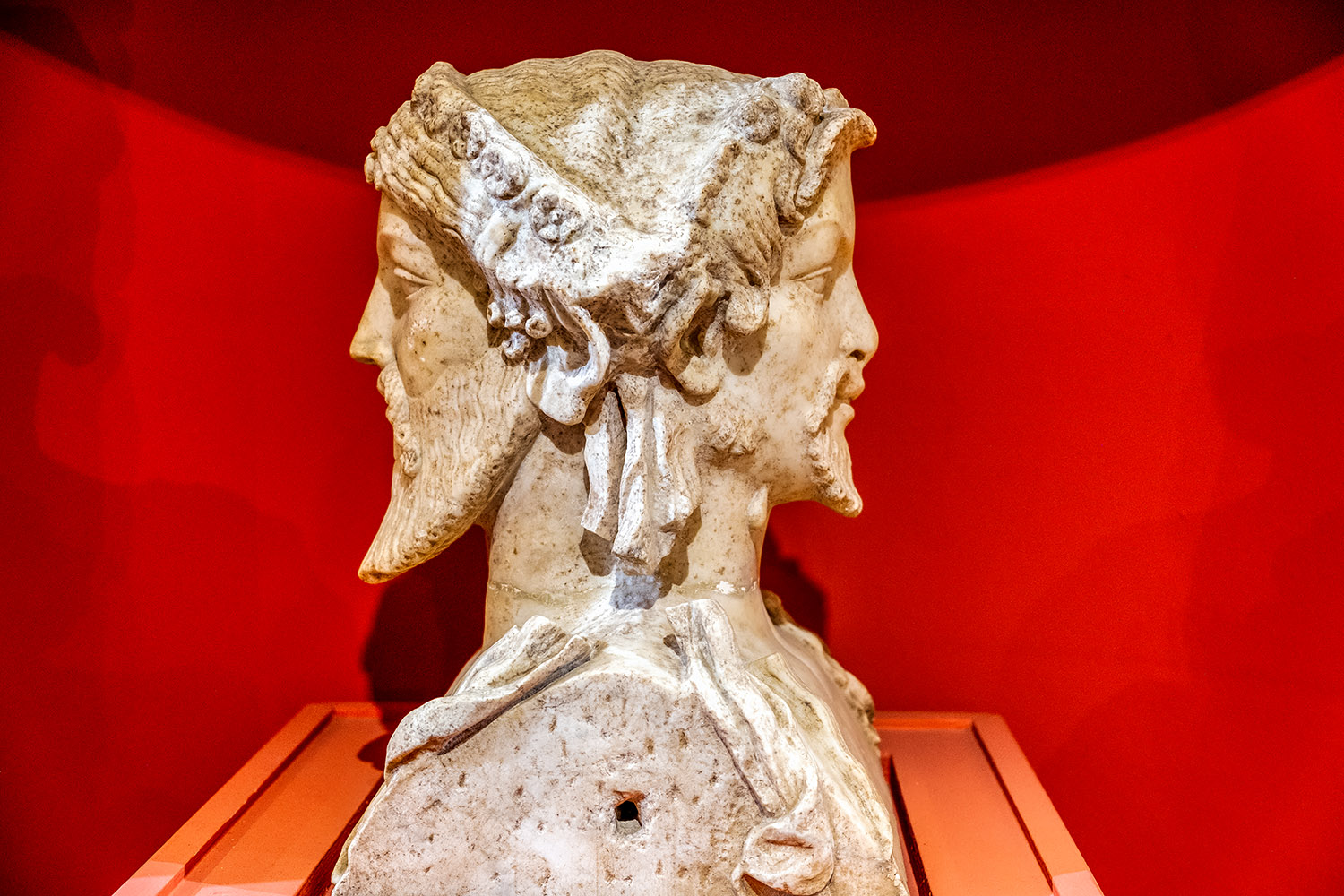
|
A white marble bust of a two-headed Hermes |
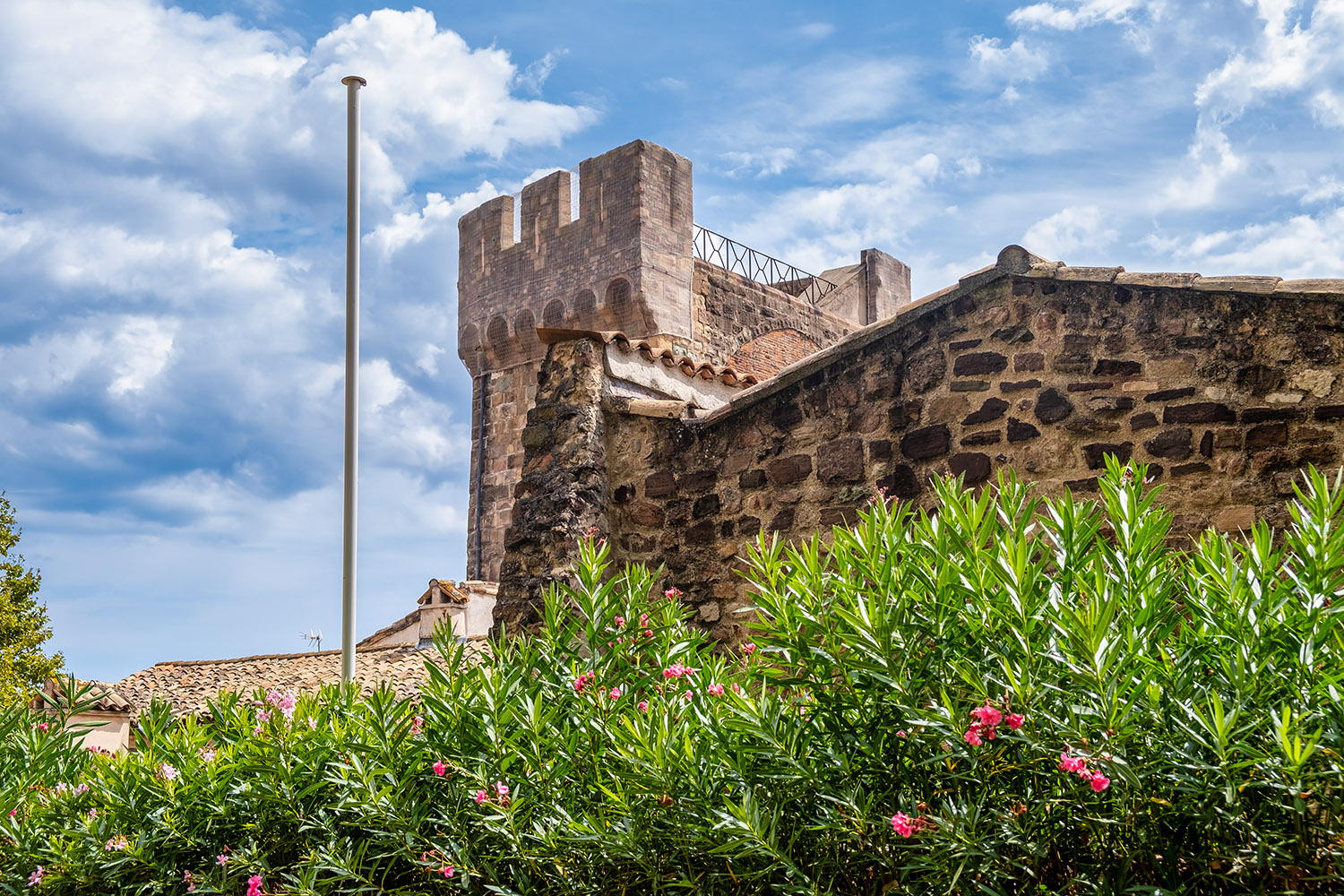
|
Outside the archeological museum |
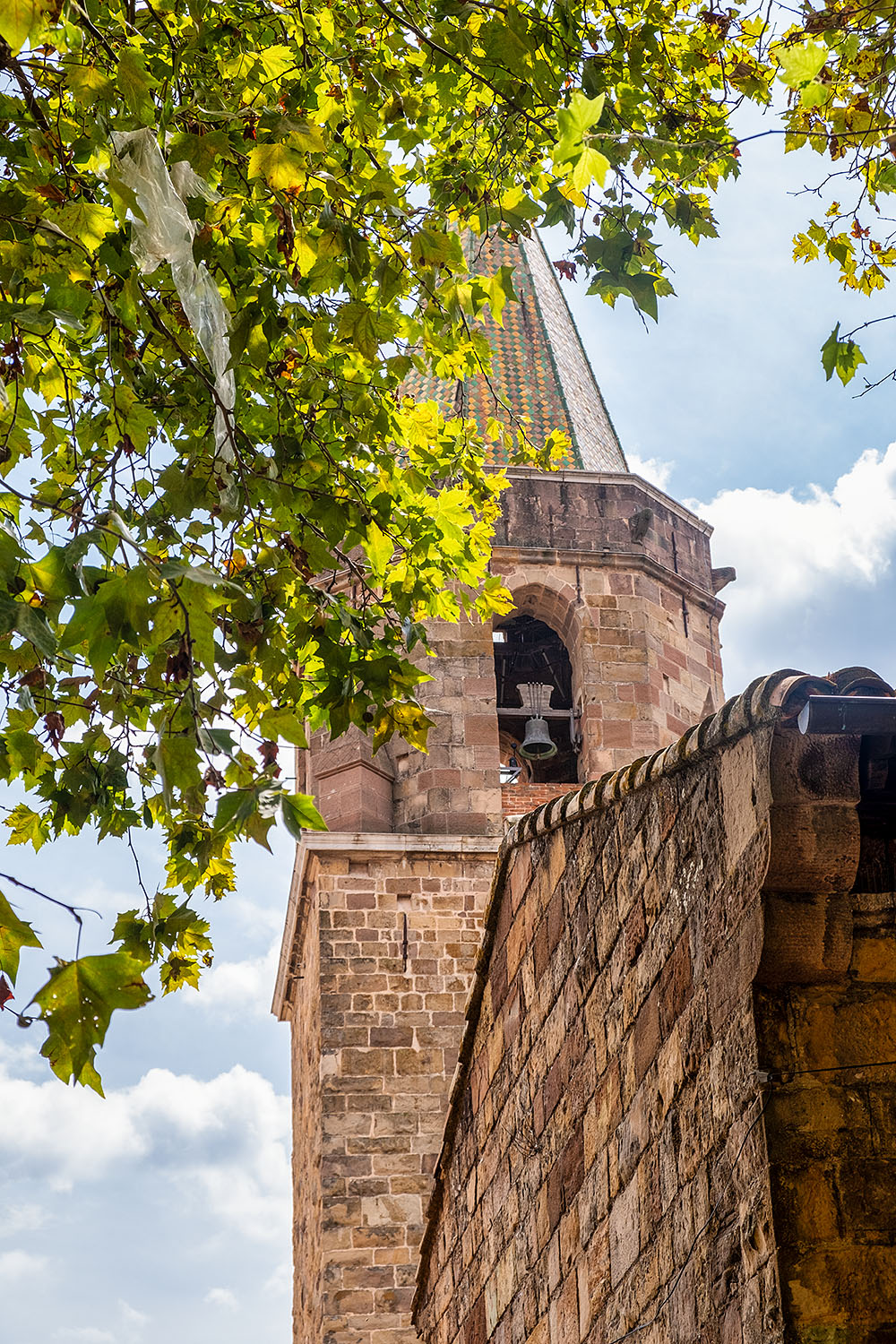
|
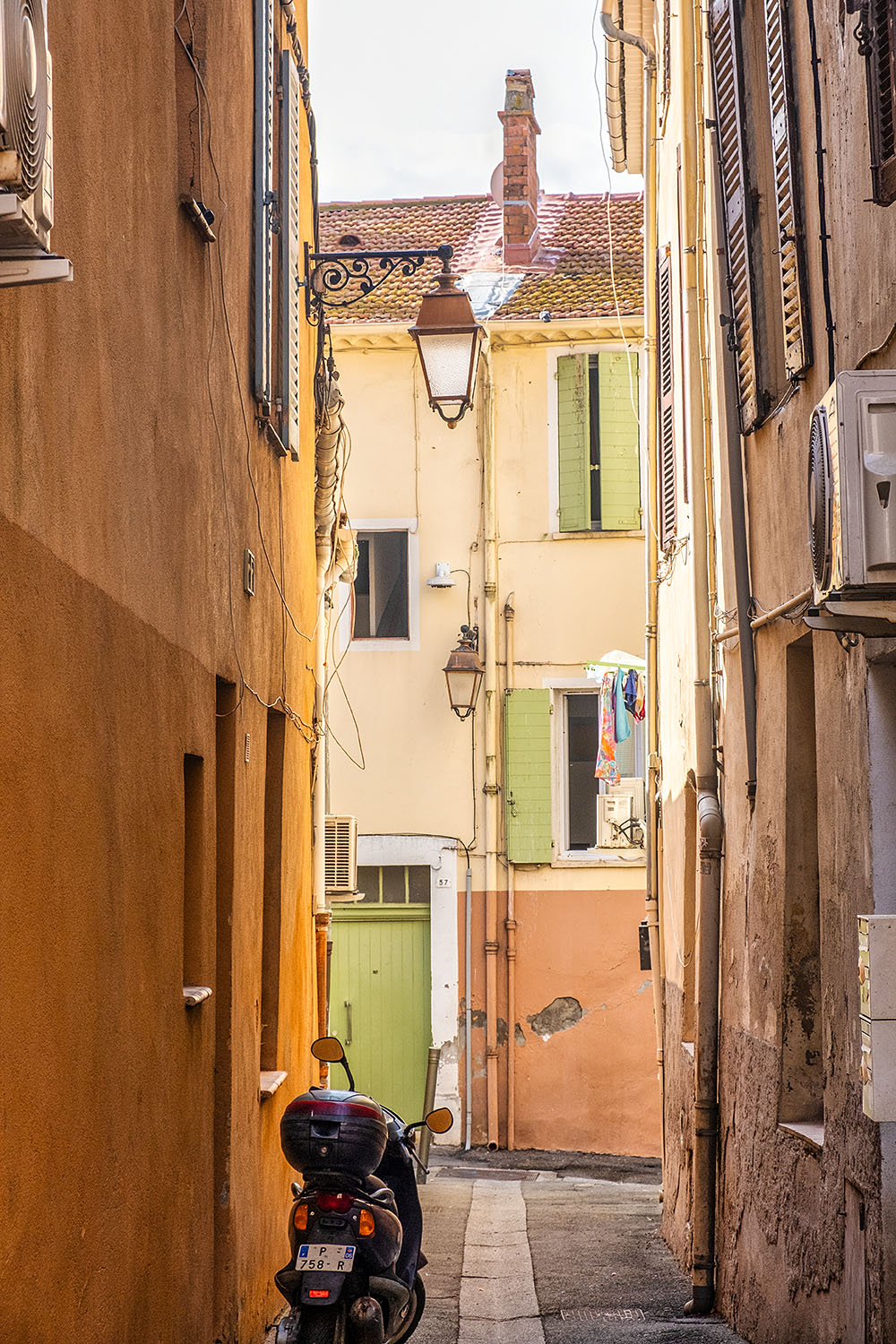
|
The belfry seen from the same location |
Side street in the old town |
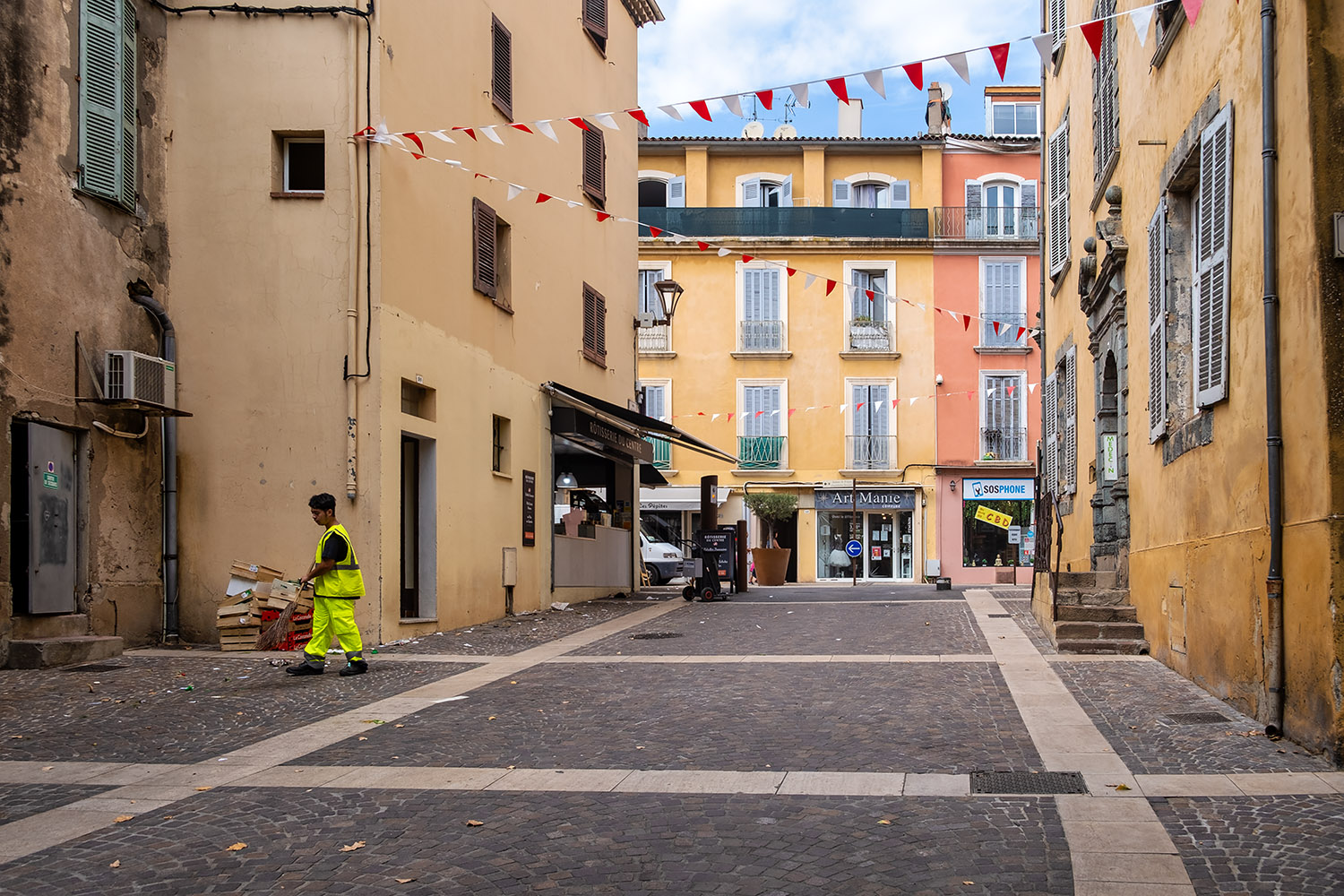
|
Walking up the rue de Fleury |
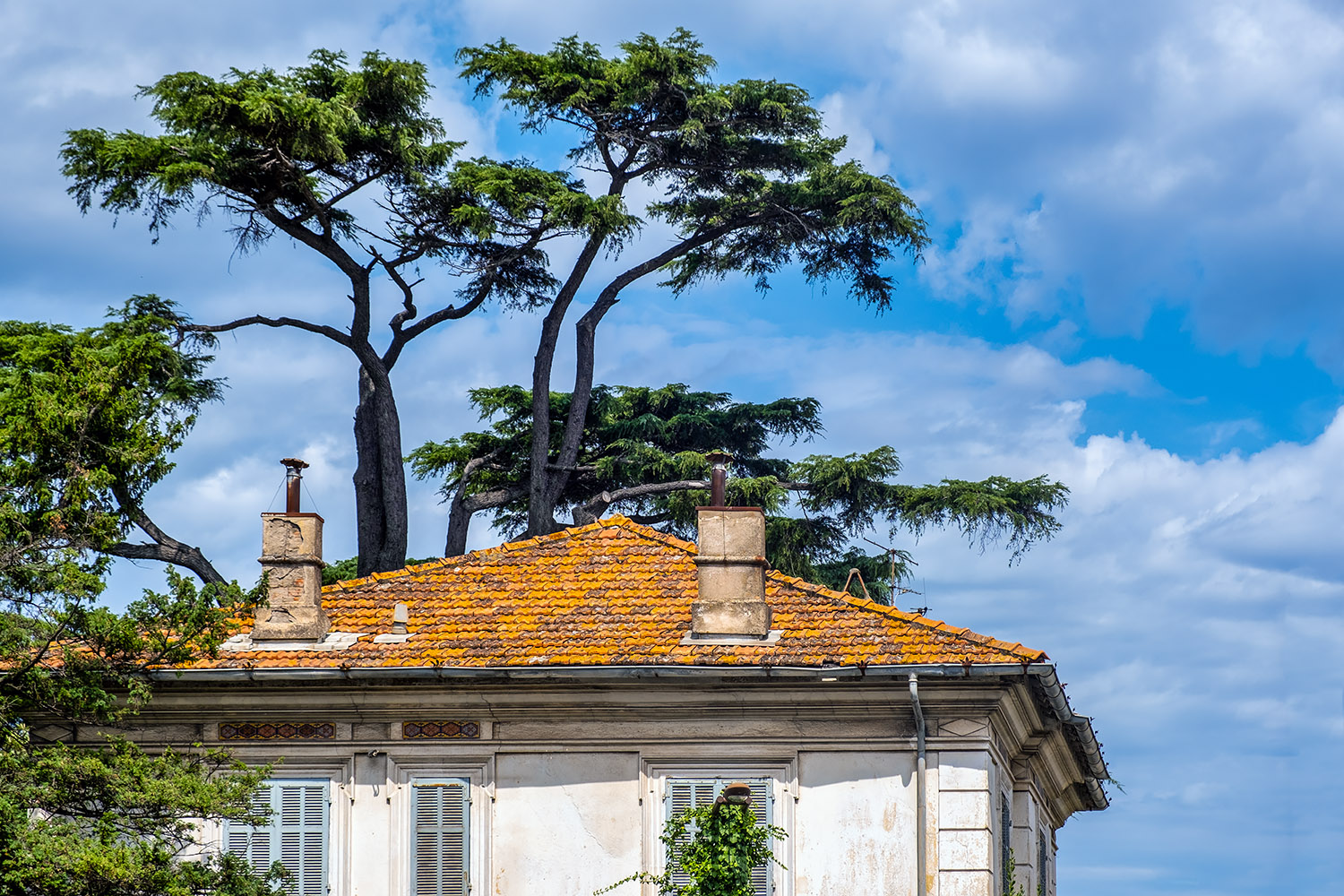
|
On the rue Gustave Bret |
The photos on this page were taken on August 25, 2021.
Home | Site Info | Family | The Area | Trips | France | Work | Rants | Photography | Odds & Ends
This page was last modified on October 1, 2021
Send feedback about this page to feedback@kiechle.com
https://www.kiechle.com/area/frejus/index.htm
(optimized for Retina display)
All contents © 1999-2025 The Kiechles